ASLI | Across International Market ● Expand International Business Professional Brand of Ventilation Fittings
Headquarters Laboratory
Motivation for building a ventilation and noise laboratory
1. Verify the airflow distribution of the vents and provide correct performance data
2. Test the level of valve leakage to improve product competitiveness with world-class manufacturers
3. Overcome the difficulties in obtaining UL certification and increase the speed of fire damper performance verification
4. Provide noise product performance to improve the noise quality environment
5. Improve the product quality and corporate image of the group company

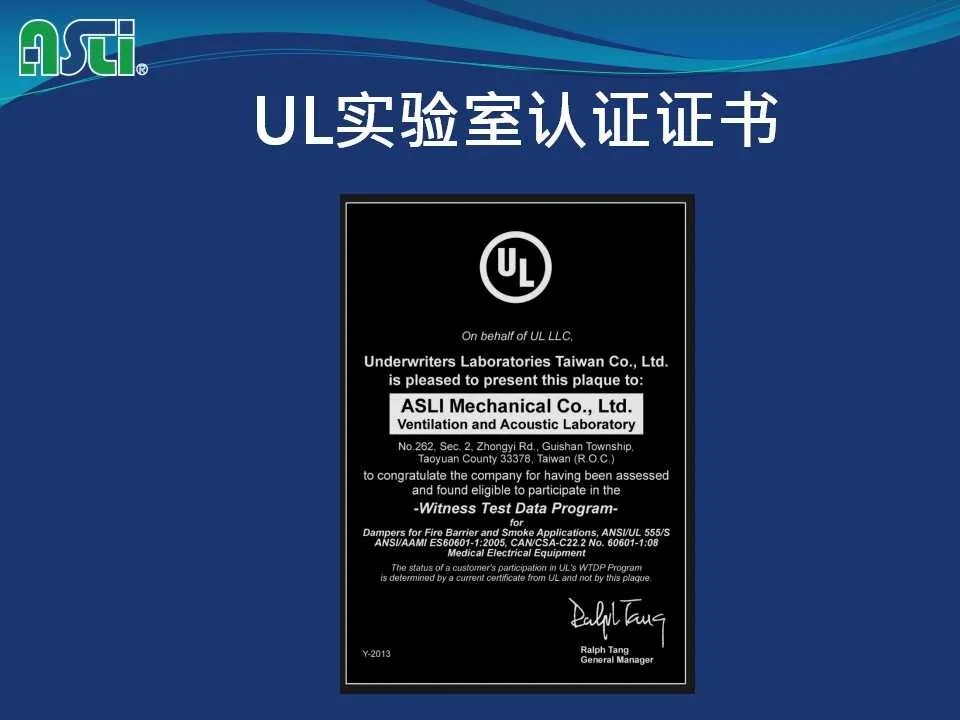
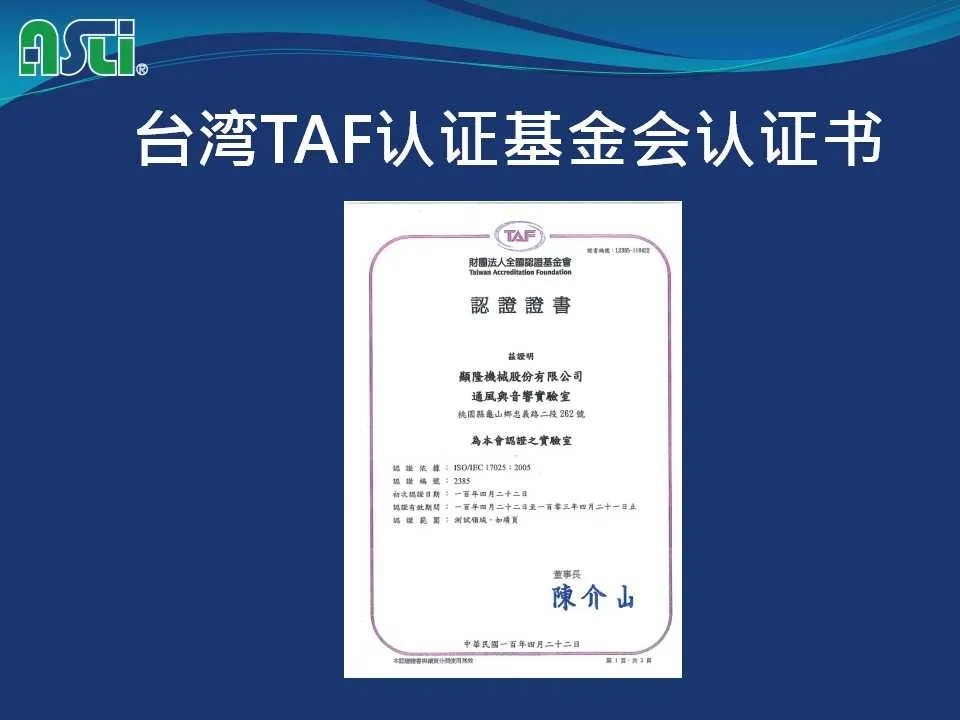
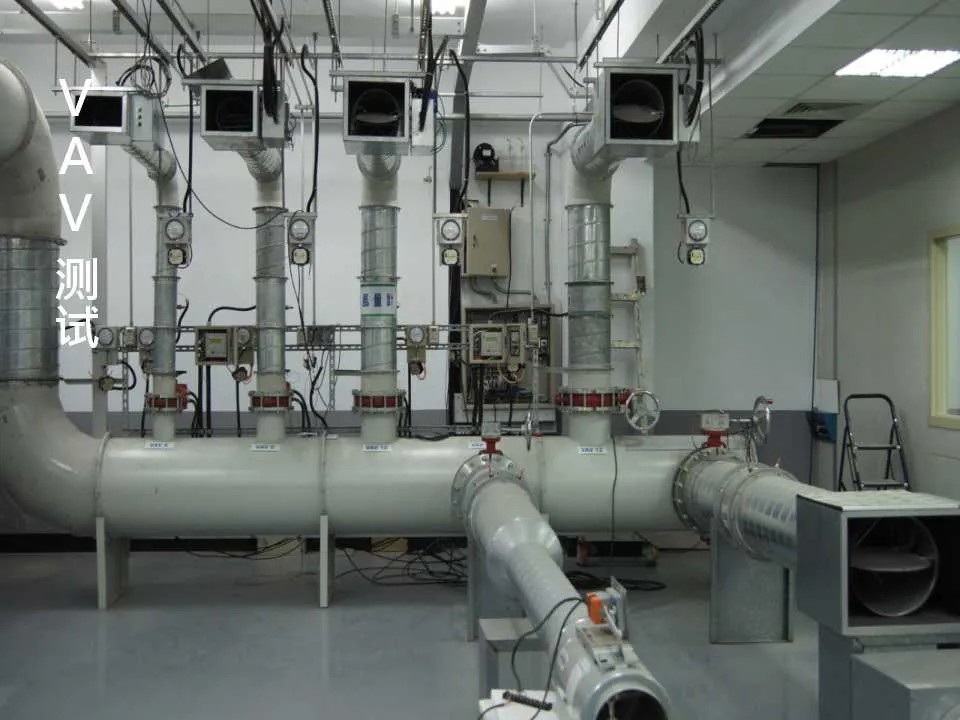
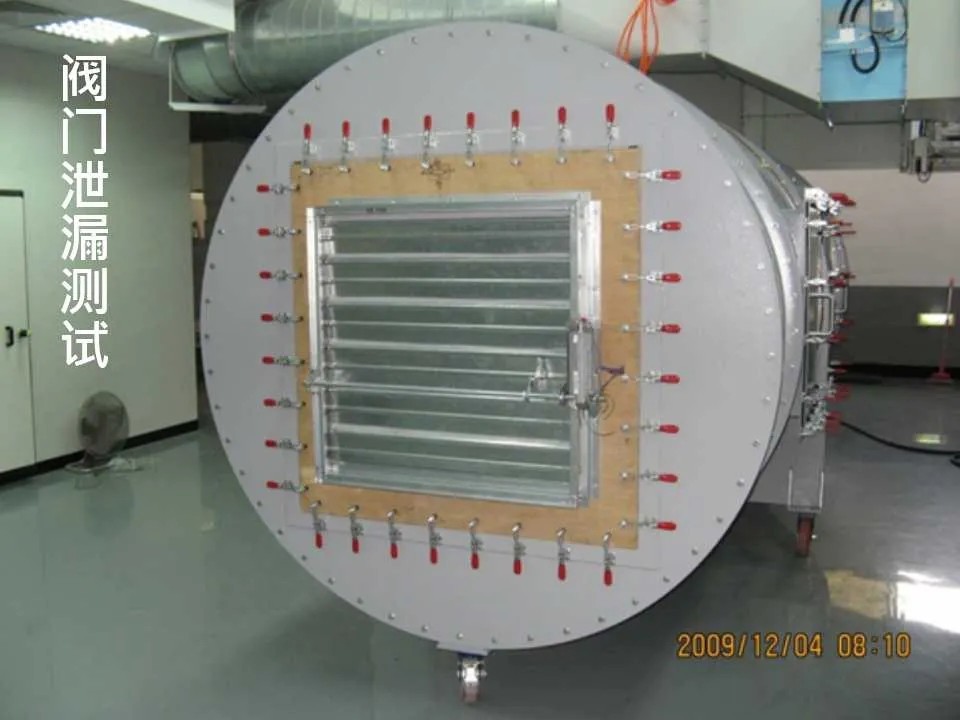
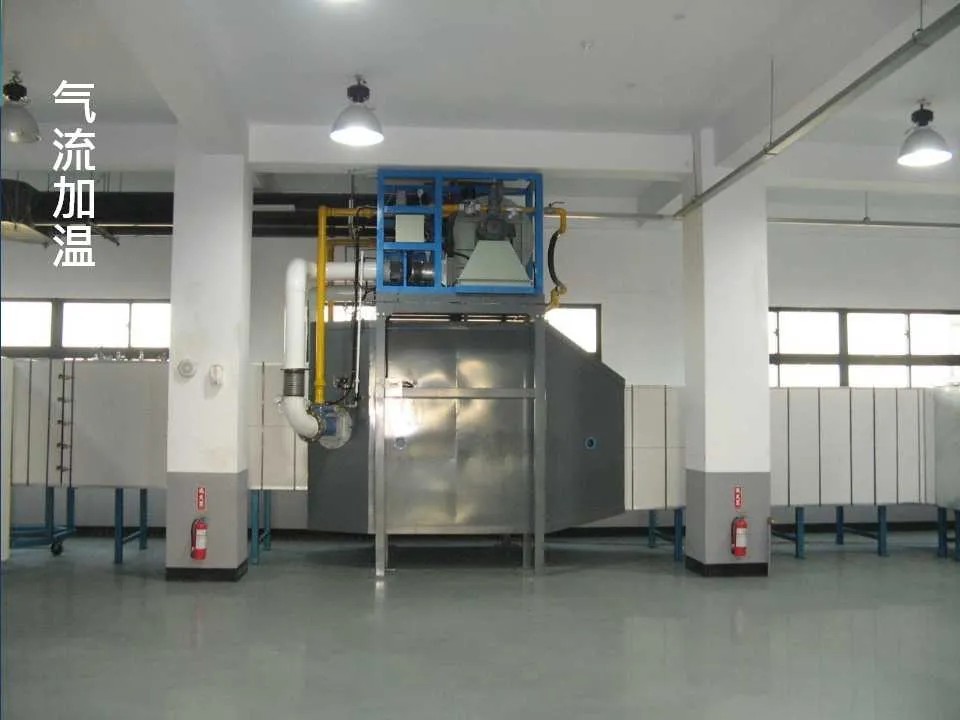
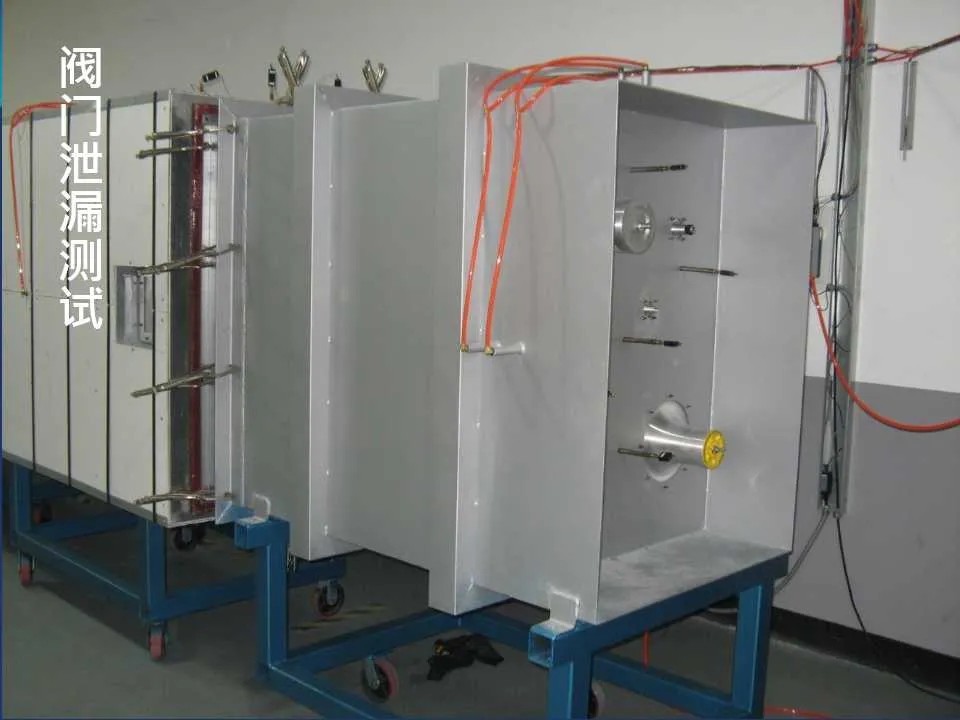
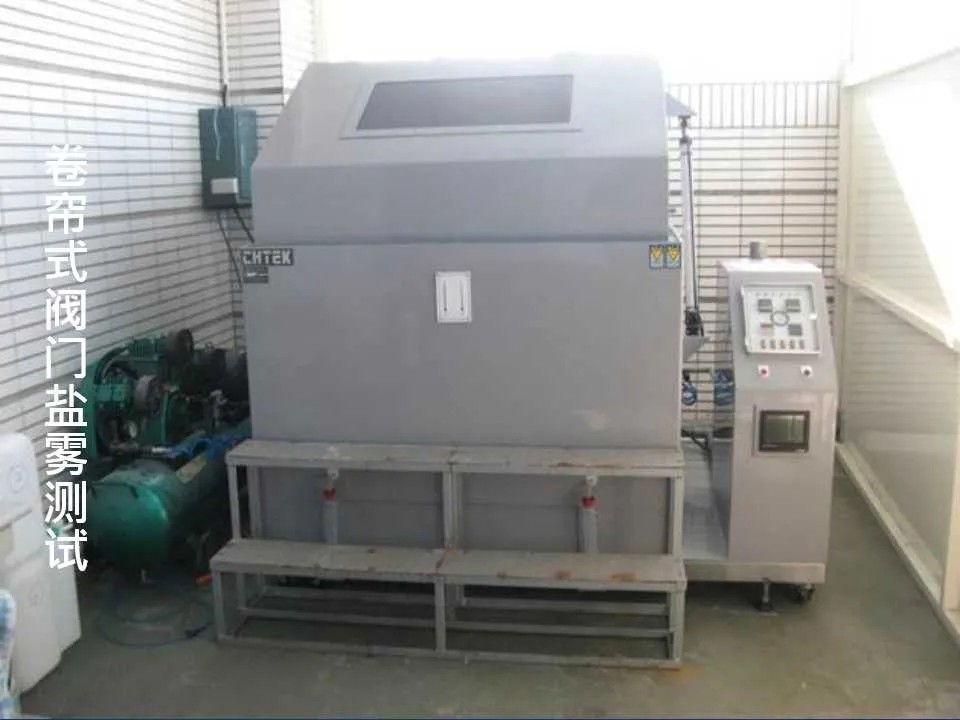
Laboratory Introduction
● The laboratory is located in Taoyuan, Taiwan, with a usable area of 2,600 square meters.
● In line with the market requirements of Taiwan and Southeast Asia, the measuring equipment
is designed and constructed in accordance with the test standards of ISO, AMCA, UL, ASTM and ASHRAE.
● Product performance verification test procedures and equipment and instruments all comply with relevant international test standards.
● Laboratory certification
A. Taiwan TAF Certification Foundation Certified Laboratory (SO 17025), certification number 2385. (TAF is equivalent to China CNAS)
B. US UL Certified Laboratory (UL 555/555S)
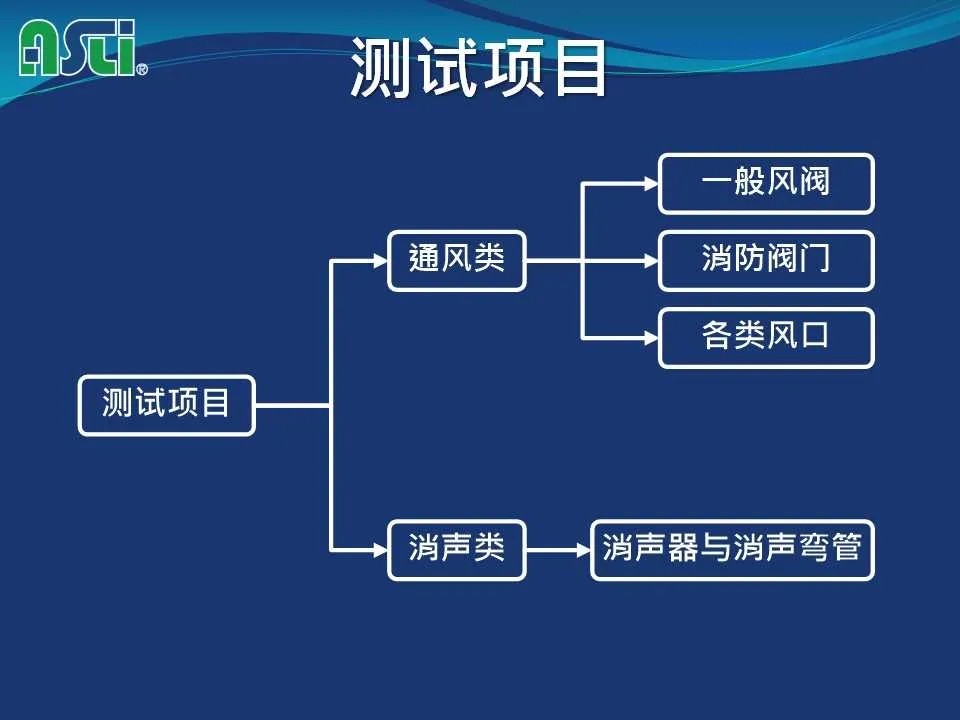
General air valve performance test
● Method basis: AMCA 500-D
● Equipment capabilities:
1. Circular air chamber
test port size - 1.14m Φ 1.14m
Maximum test pressure - 300mmAq
Maximum test air volume - 350CMM
2. Rectangular air chamber
test port size - 2.0m Φ 2.0m
Maximum test pressure - 340mmAq
Maximum test air volume - 2800CMM
● Measurement items: pressure loss, leakage and pressure resistance
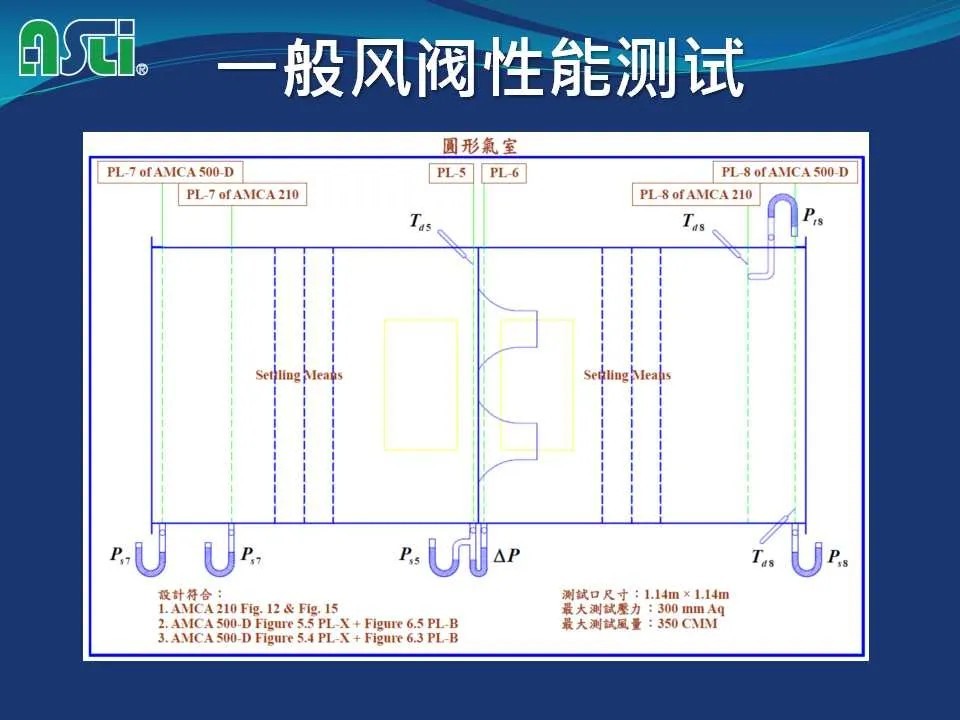


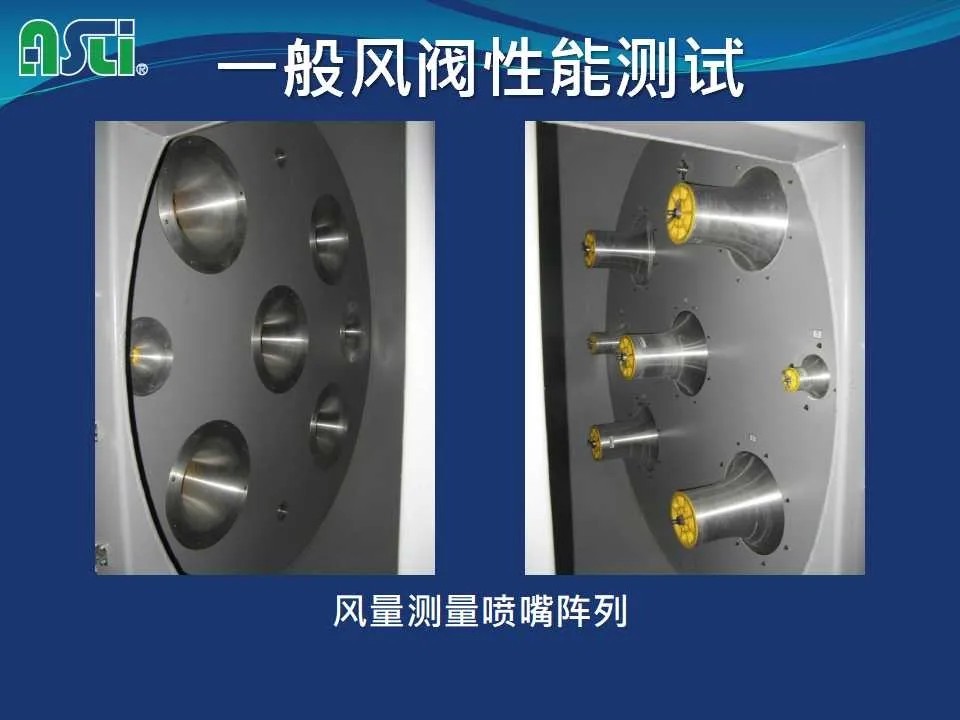

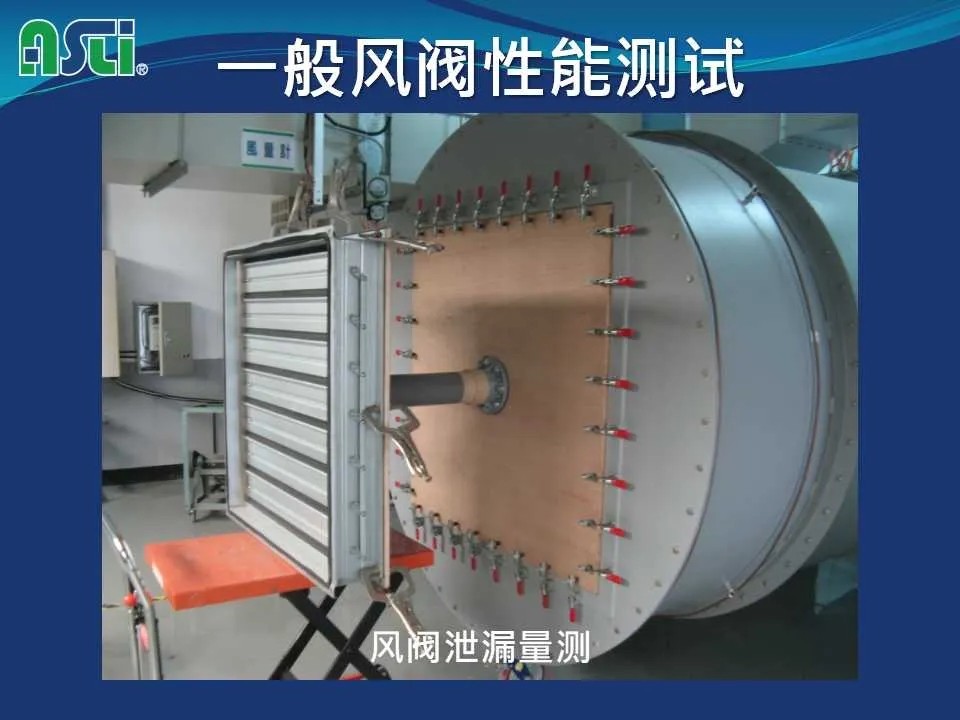

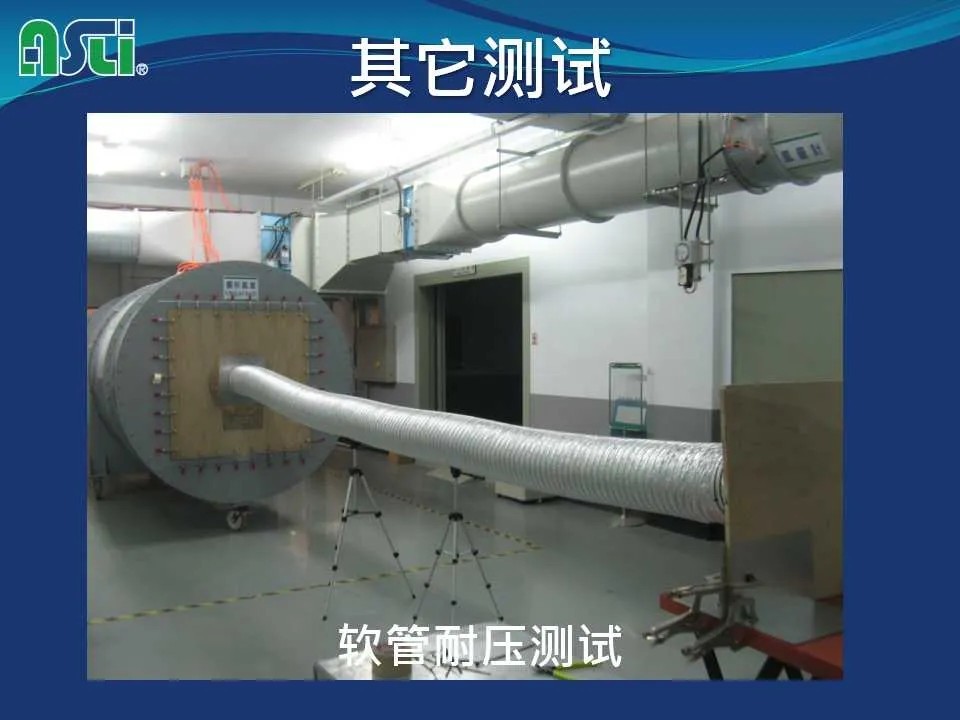
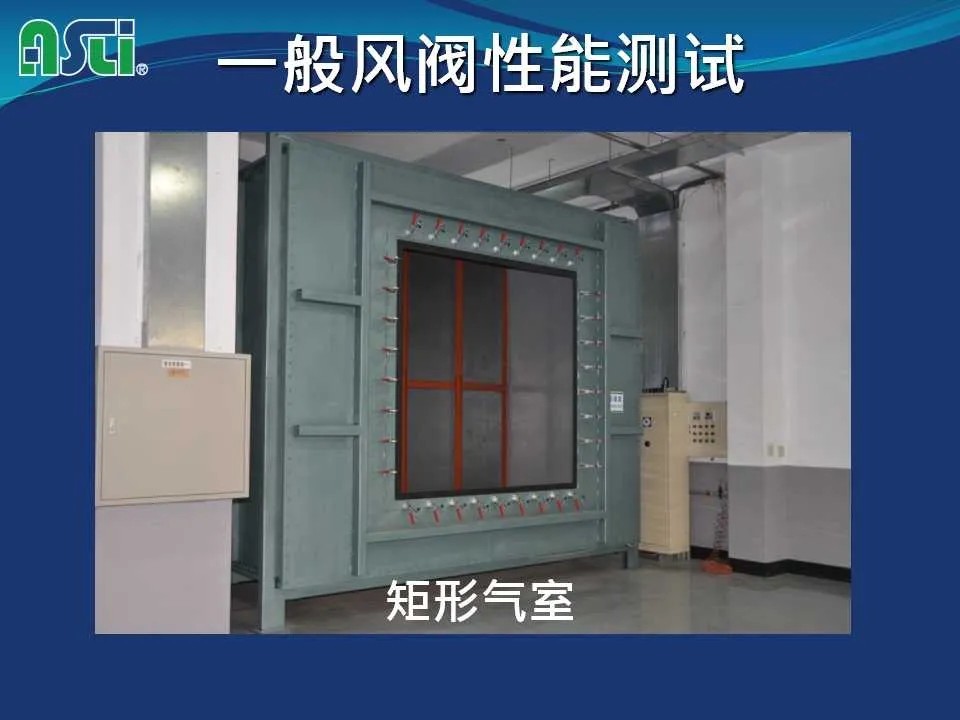



Future work - Introducing national standard testing methods to meet the needs of the Chinese market
JG/T 436 Building ventilation air volume regulating valve
Fire valve performance test
Fire damper classification
● Smoke damper
● Fire damper
● Fire/smoke damper
Test Methods
● UL 555 -Fire Damper
● UL555S-Smoke Damper
● AMCA 500-D
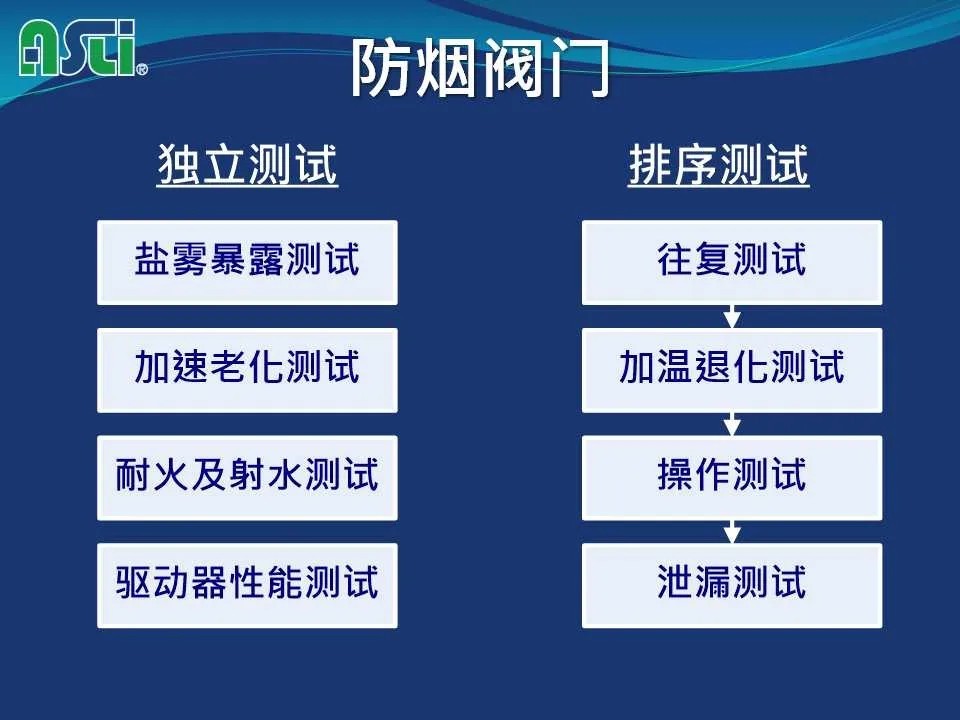
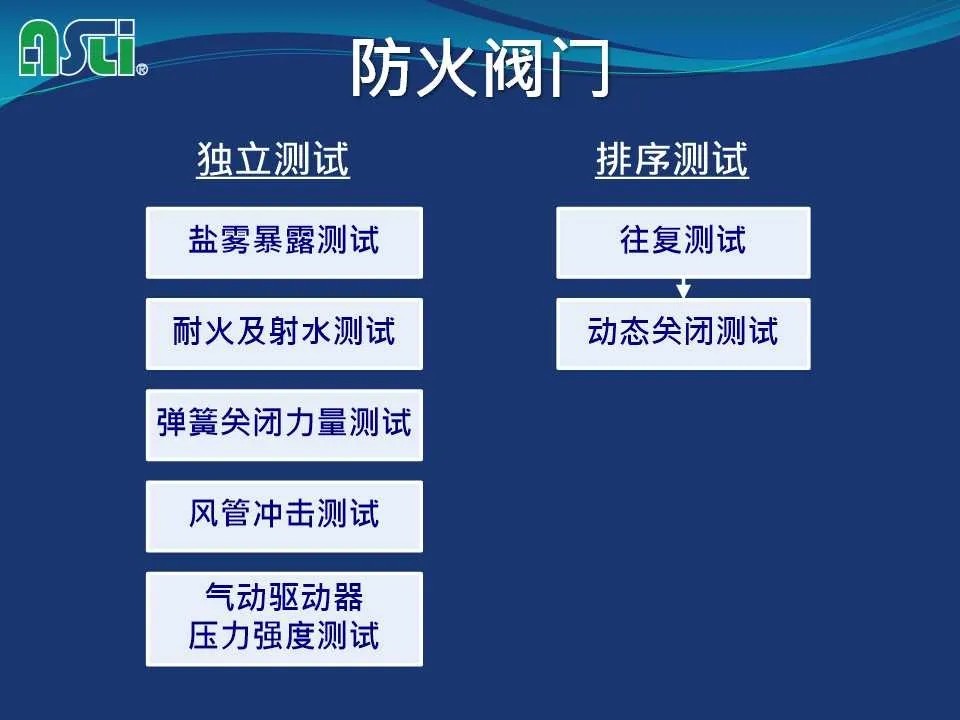

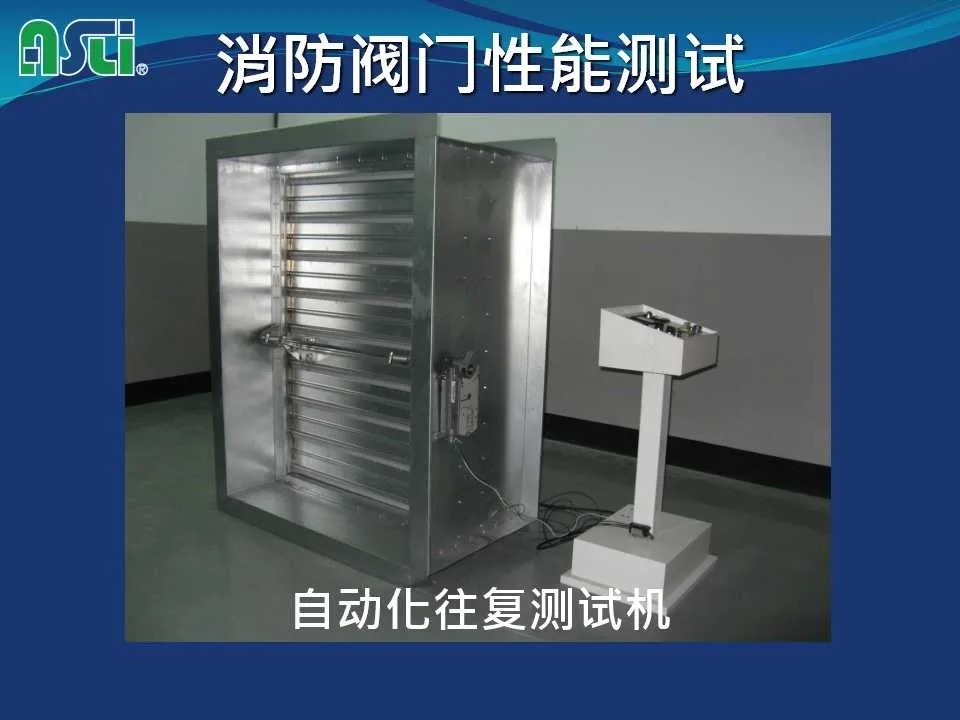
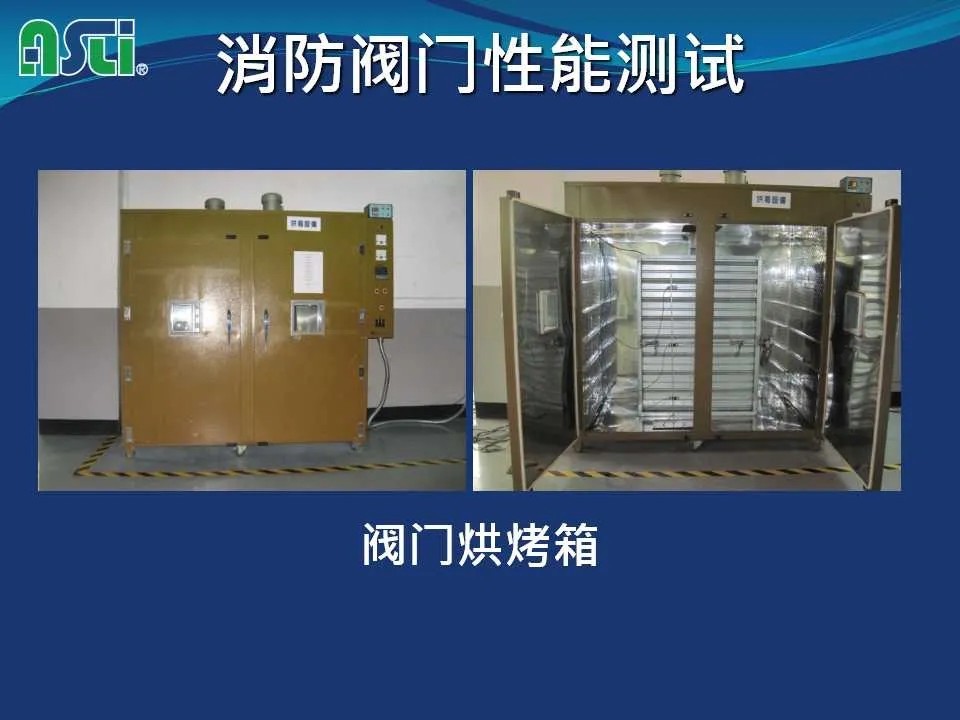
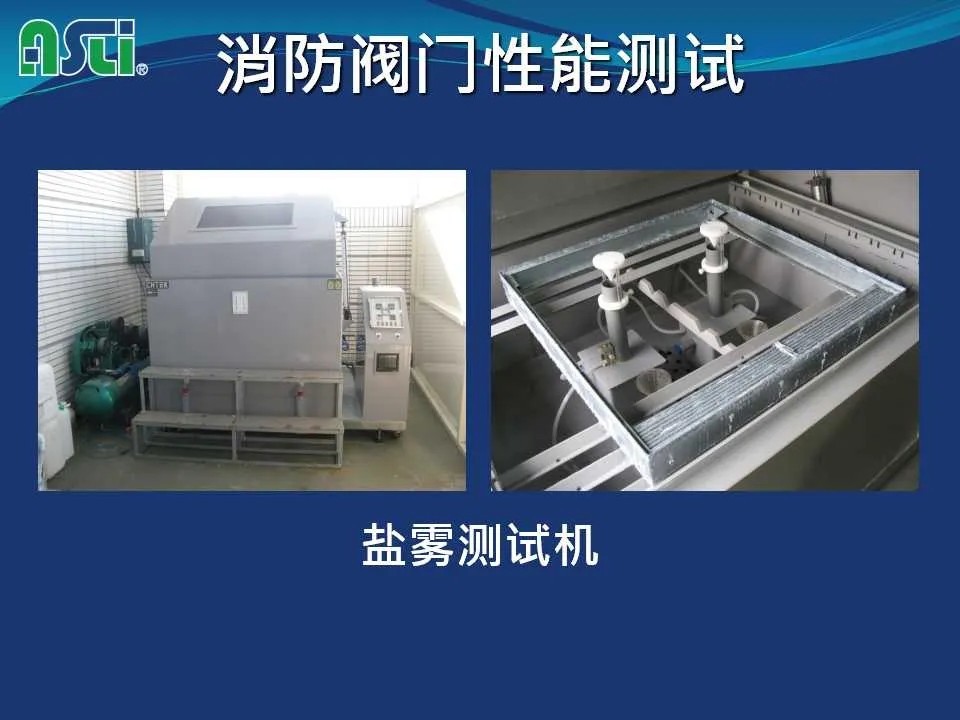



Future work - Introducing national standard testing methods to meet the needs of the Chinese market
GB 15930 Fire dampers for building ventilation and smoke exhaust systems
Various air outlet performance tests
● Method - ANSI-ASHRAE 70 Method of Testing the Performance of Air Outlets and Air Inlets
● Measurement items - Blowing distance (or diffusion radius), pressure loss
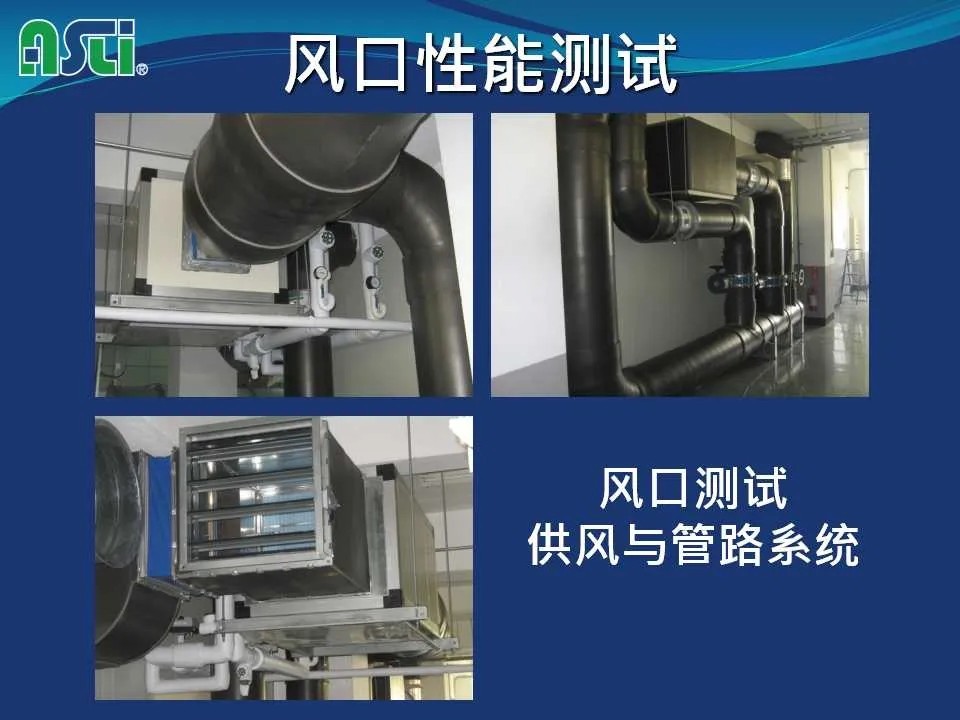
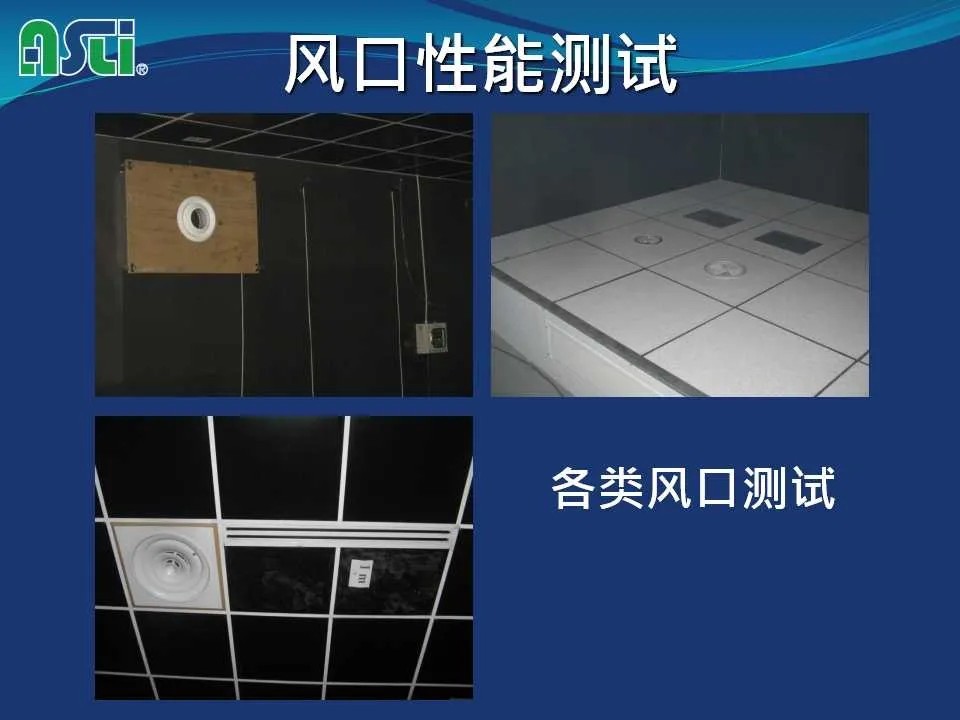
Future work - Introducing national standard testing methods to meet the needs of the Chinese market
1. JG/T 14 Ventilation and air conditioning vents
2. JG/T 20 Air distributor performance test method
Muffler and muffler elbow performance test
量测方法
ASTM-E477 Standard Test Method for Measuring Acoustical and Airflow Performance ofDuct Liner Materials and Prefabricated Silencers
Measurement Items
√ Pressure Drop
√ Insertion Loss
√ Airflow Generated Noise
Measuring range
√ Frequency range -50Hz~8000Hz
√ Maximum wind speed -20m/s



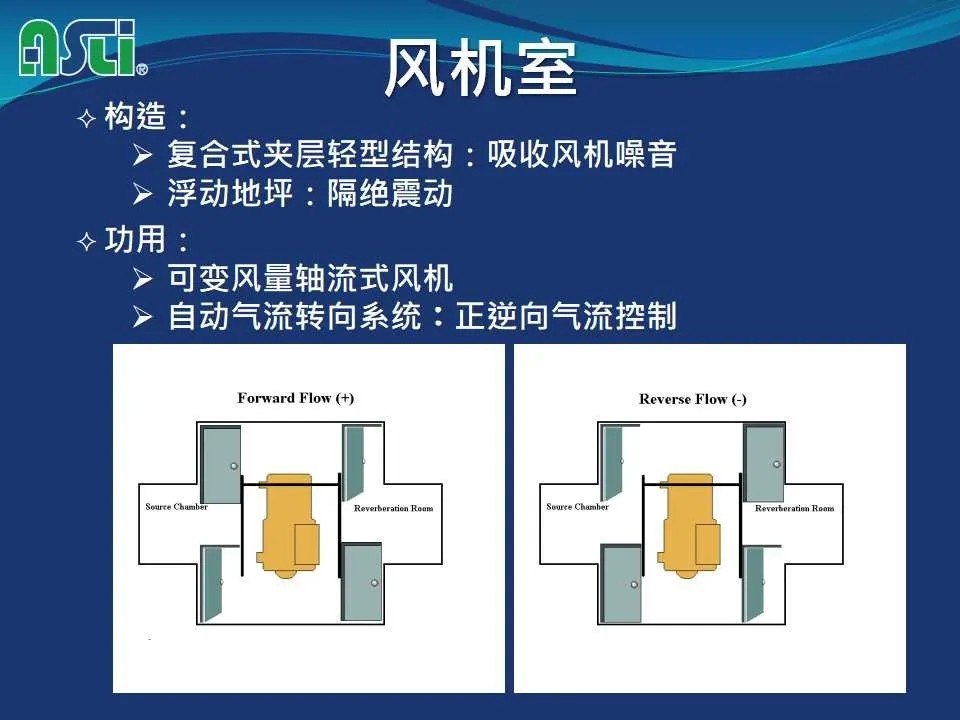
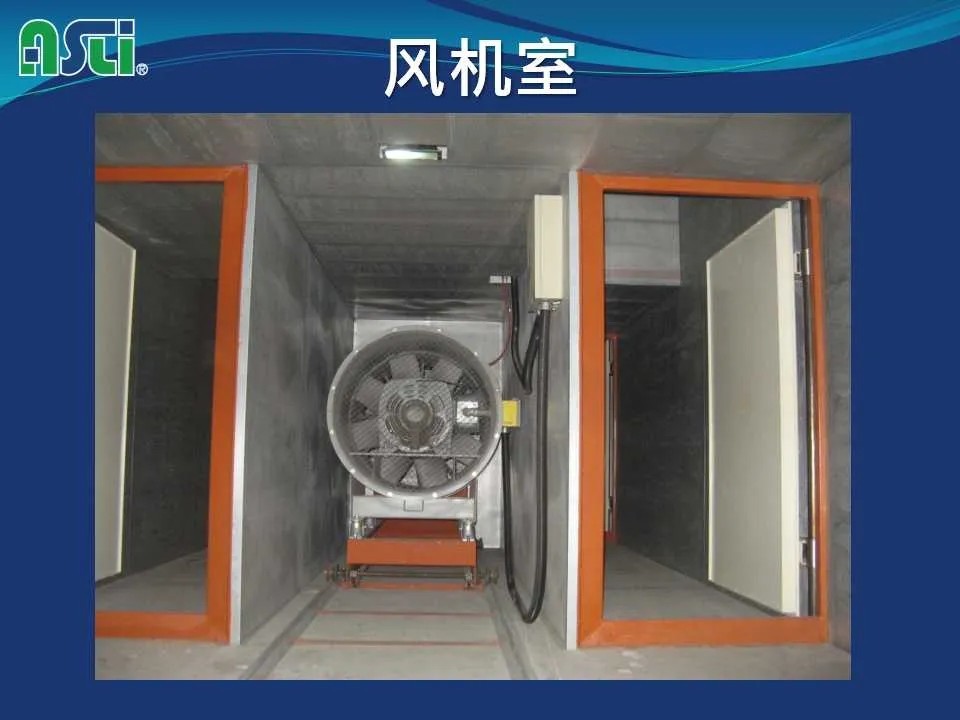


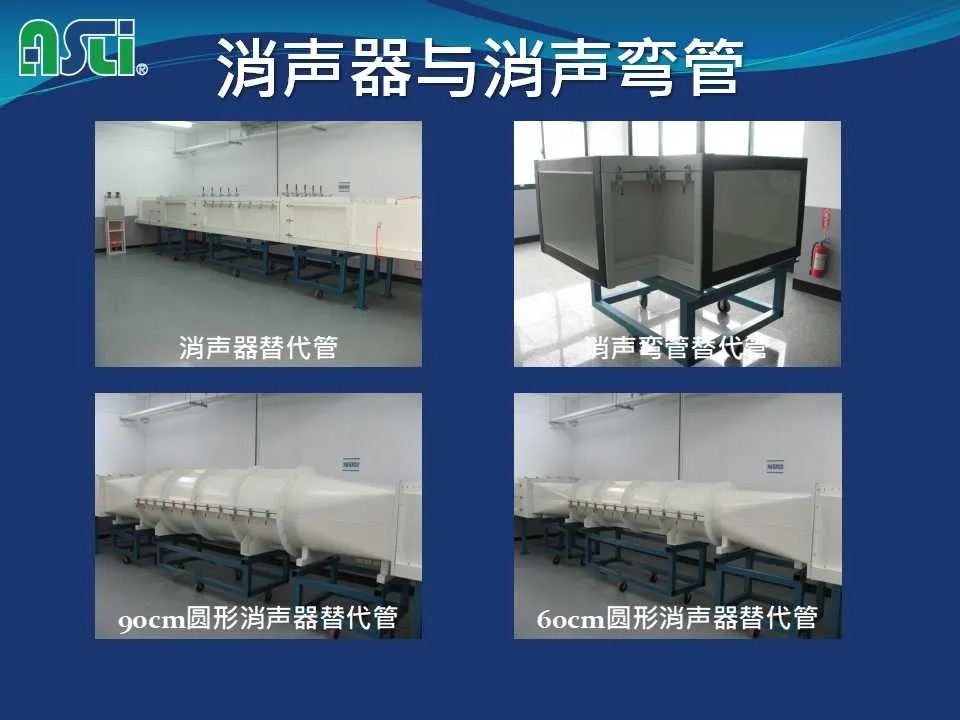
Future work - Introducing national standard testing methods to meet the needs of the Chinese market
GB/T 25516 Acoustics - Laboratory measurement methods for duct silencers and duct end units - Insertion loss, airflow noise and total pressure loss
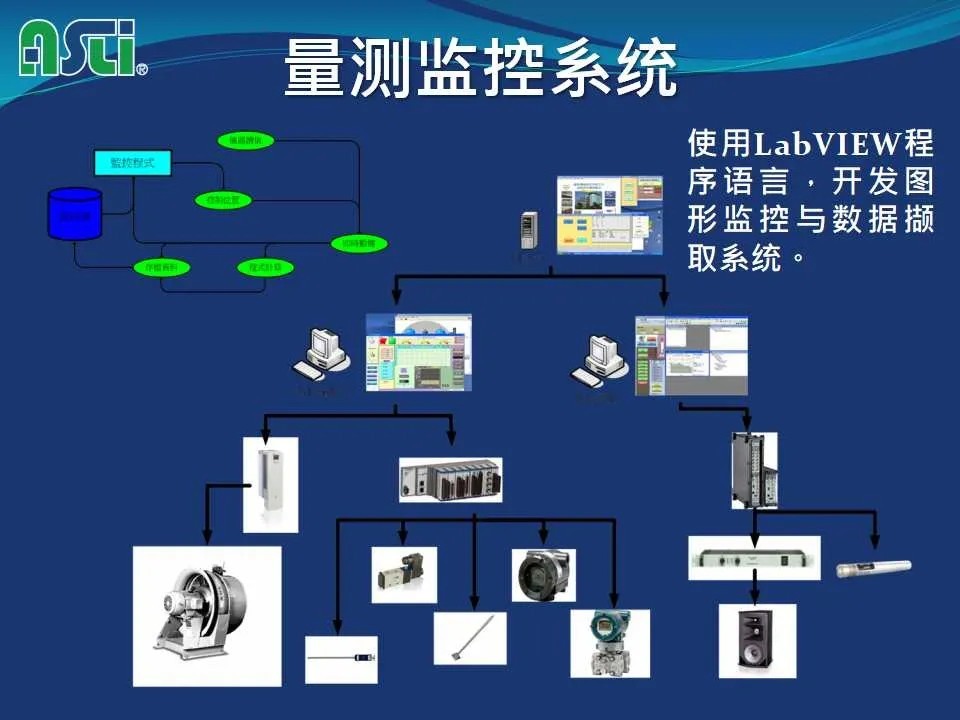
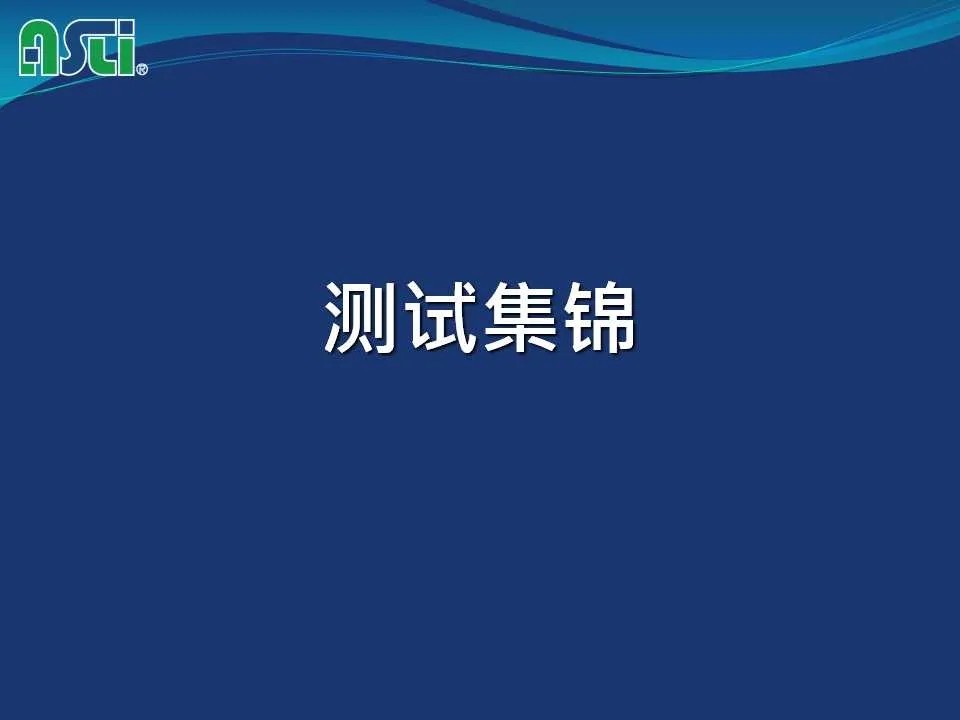
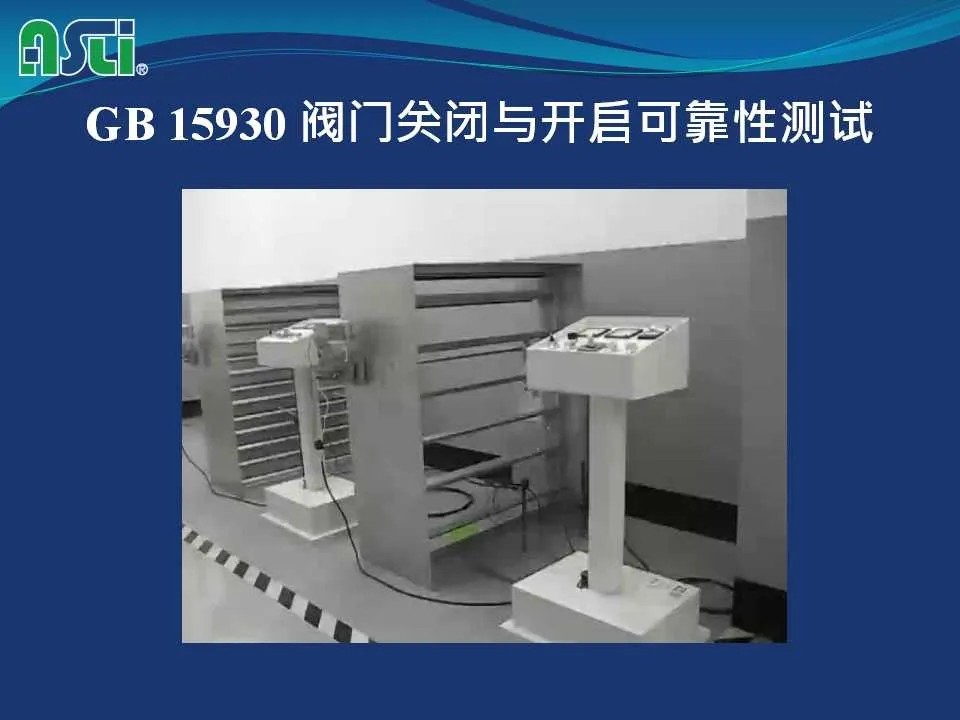
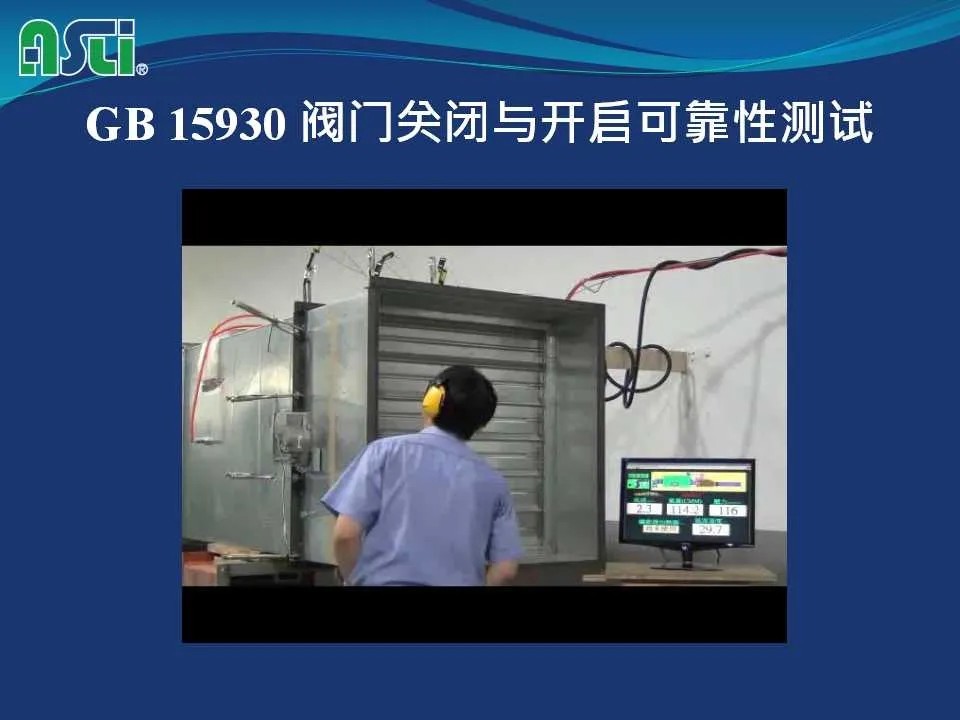
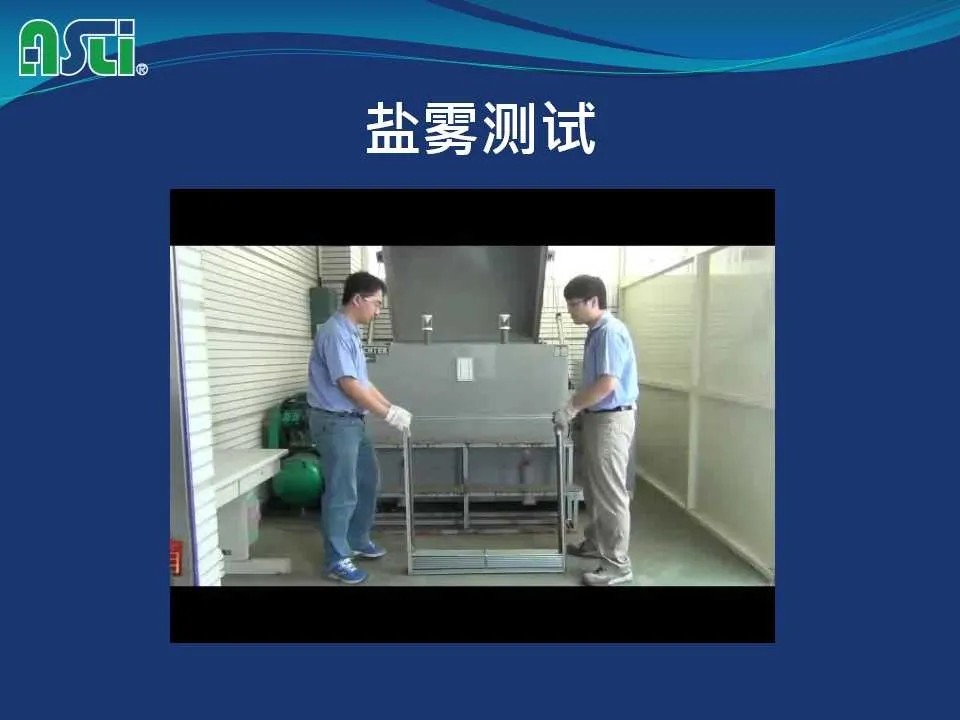

Product development and design
Product design 3D drawing



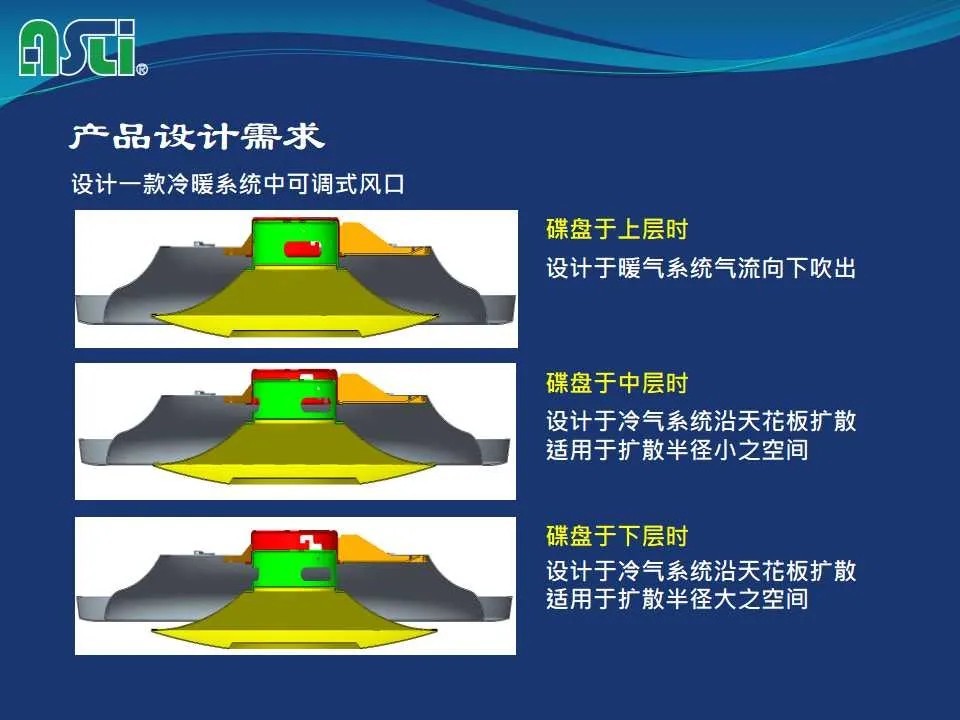
Product 3D computer airflow simulation

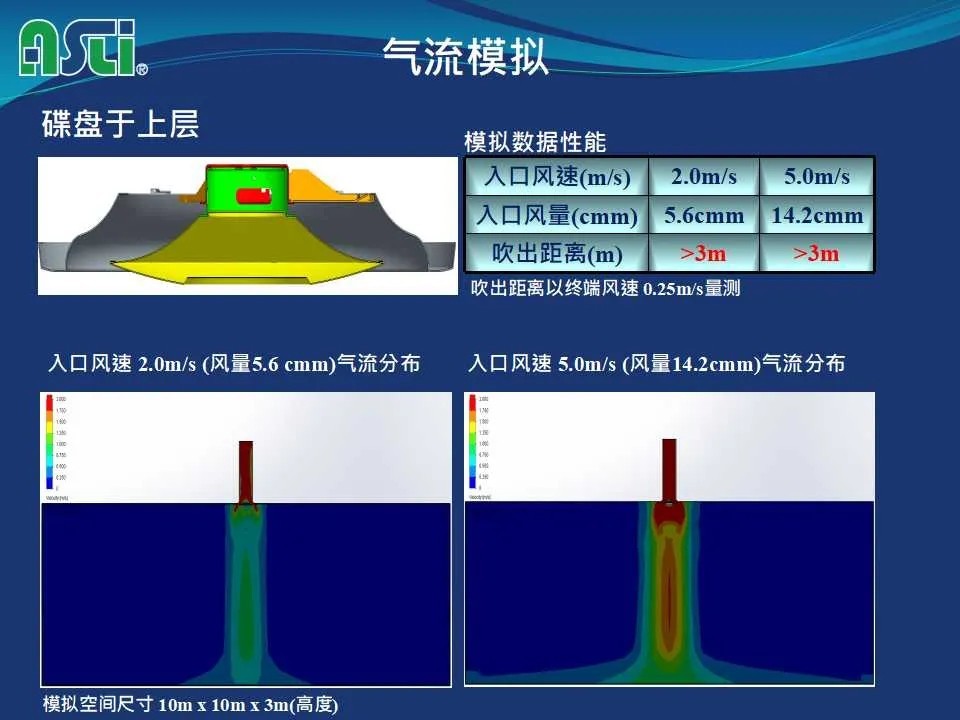


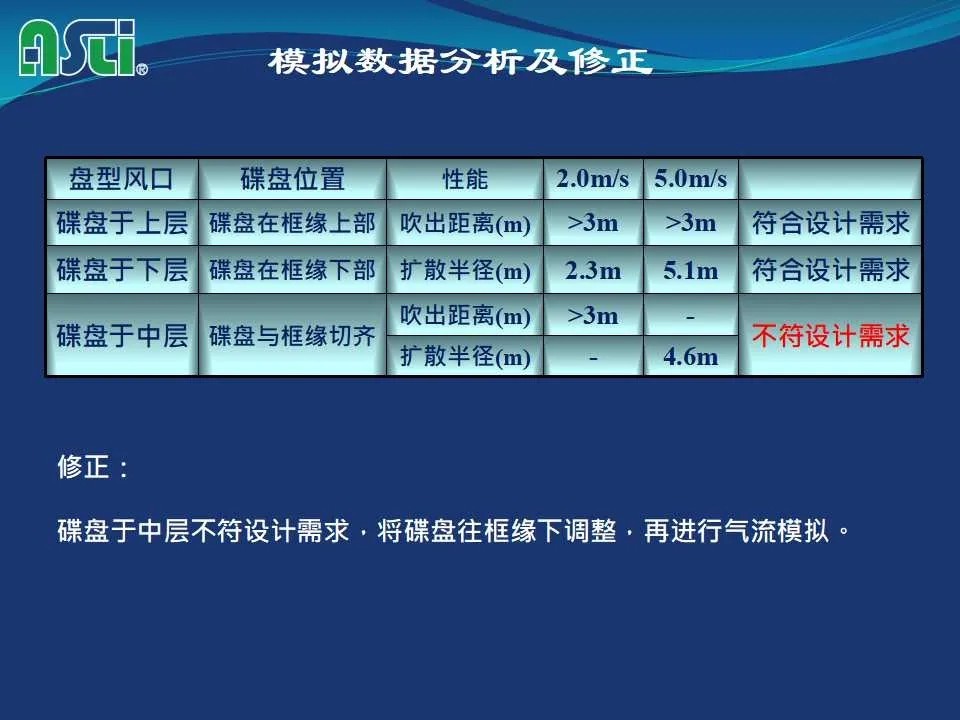

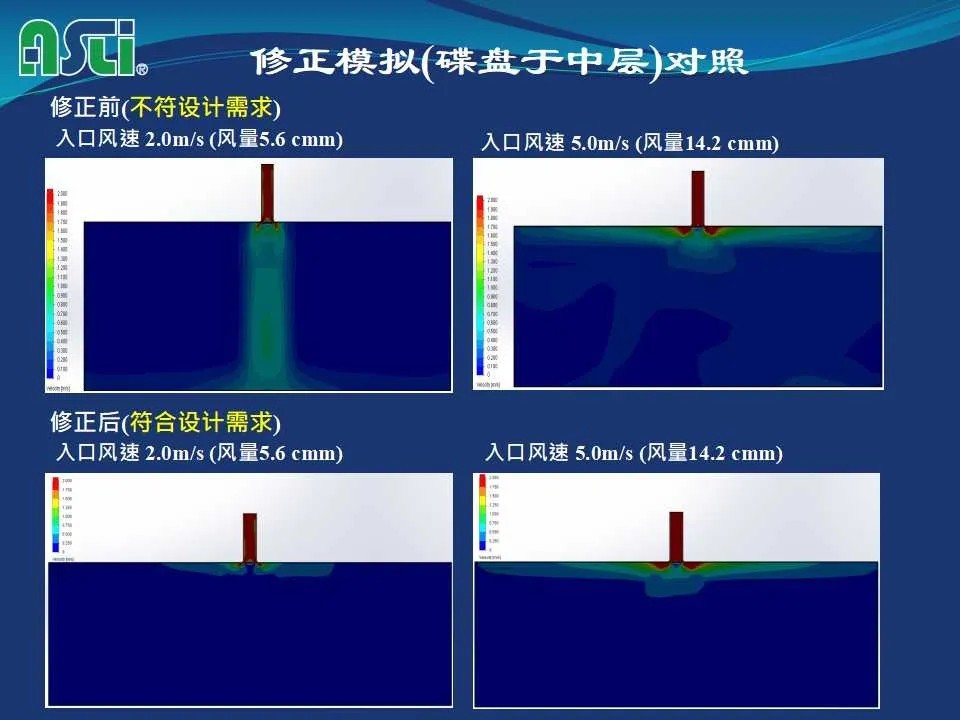
Laboratory Airflow Testing and Validation
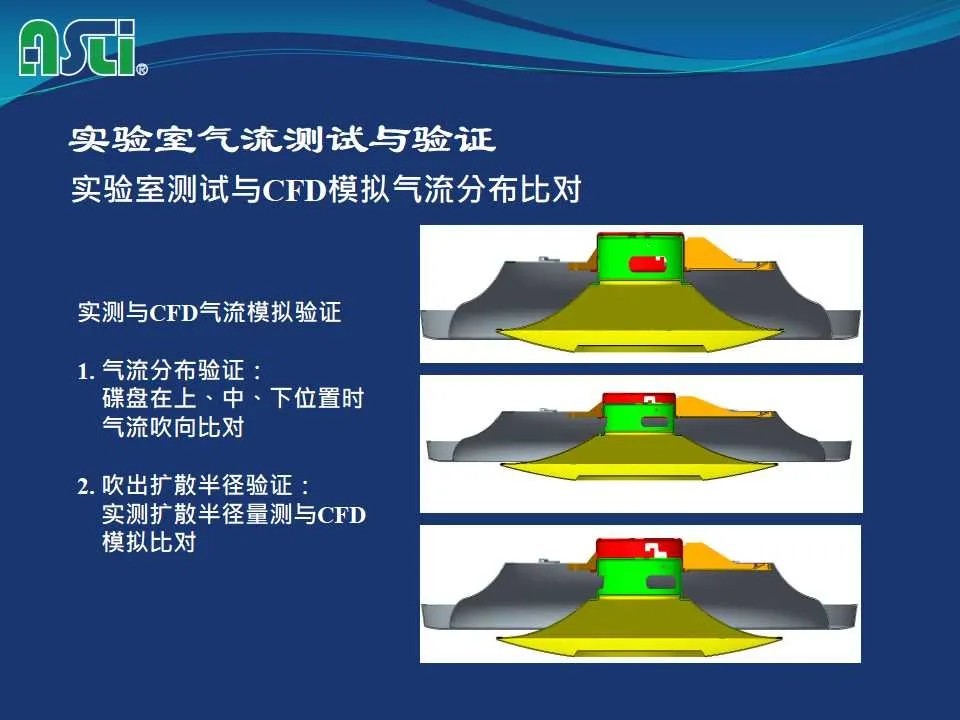
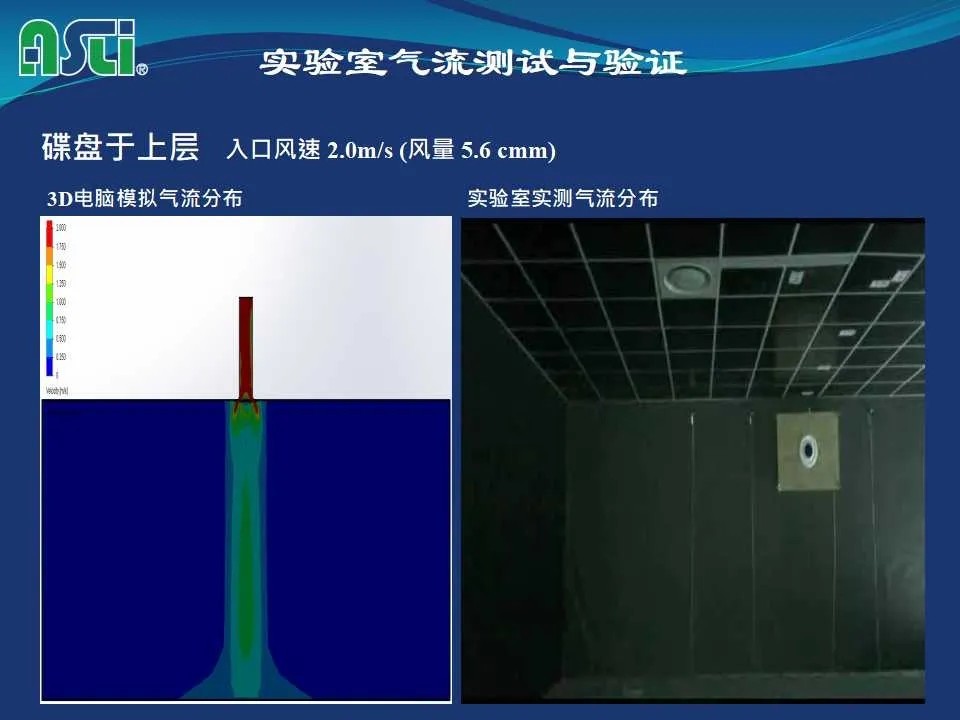
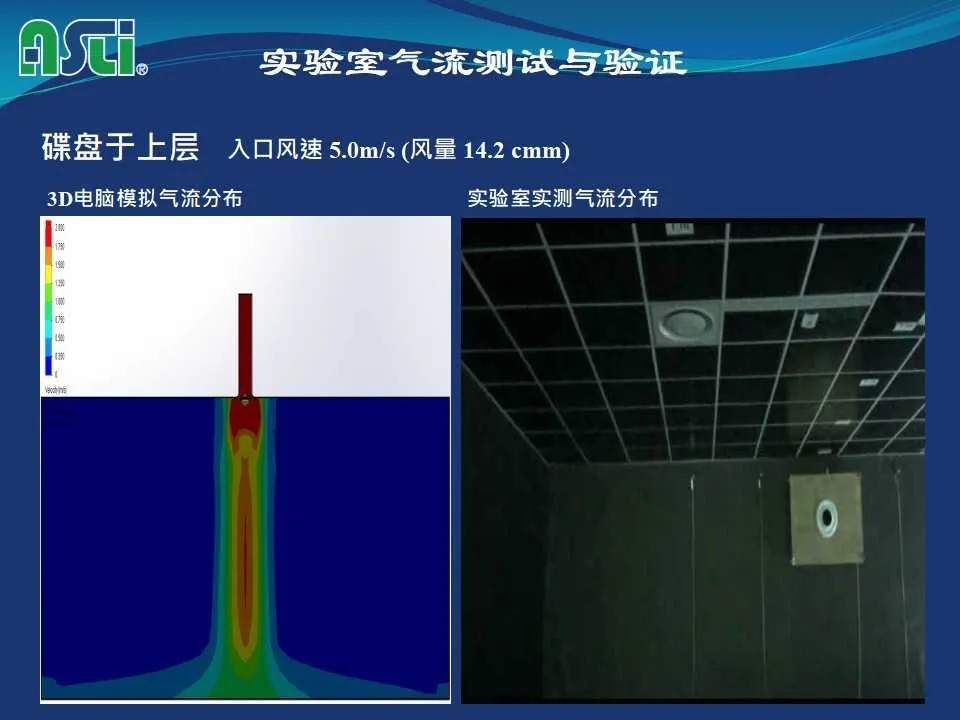
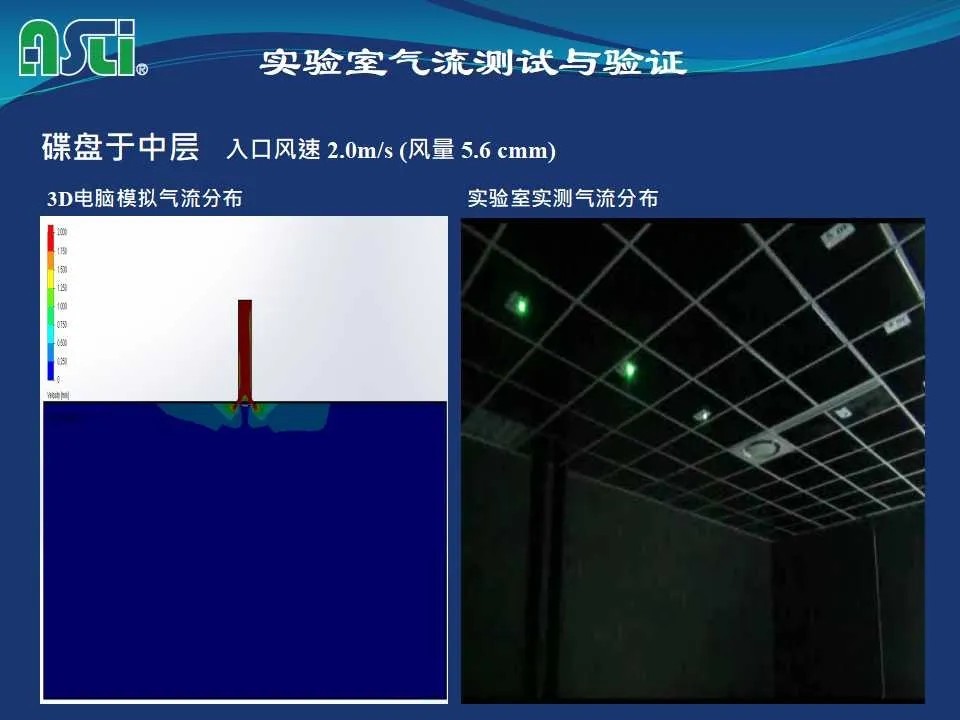

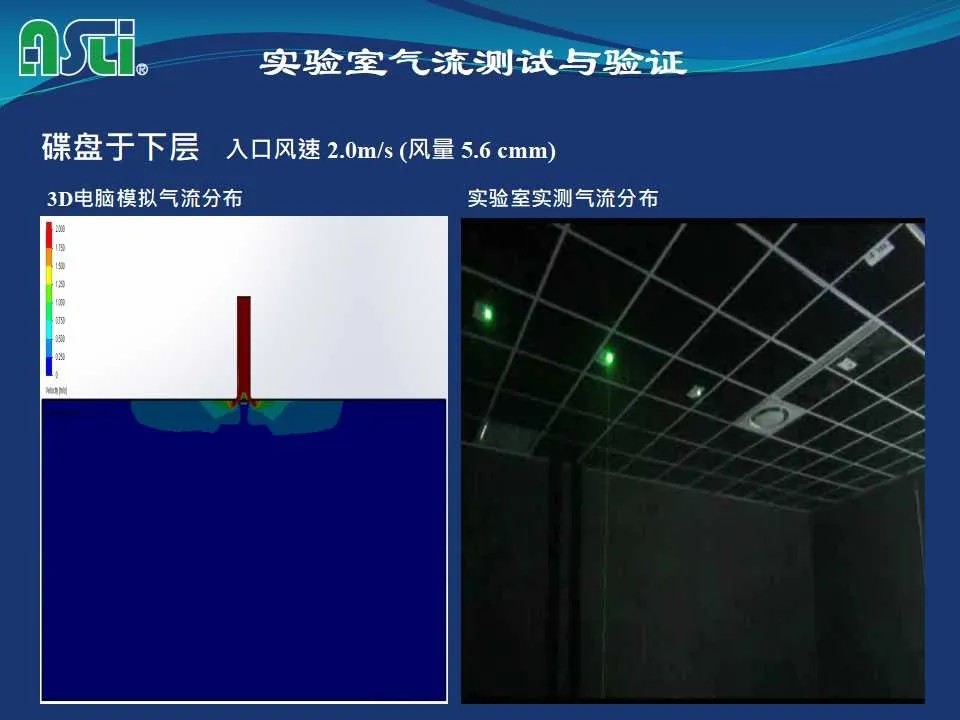
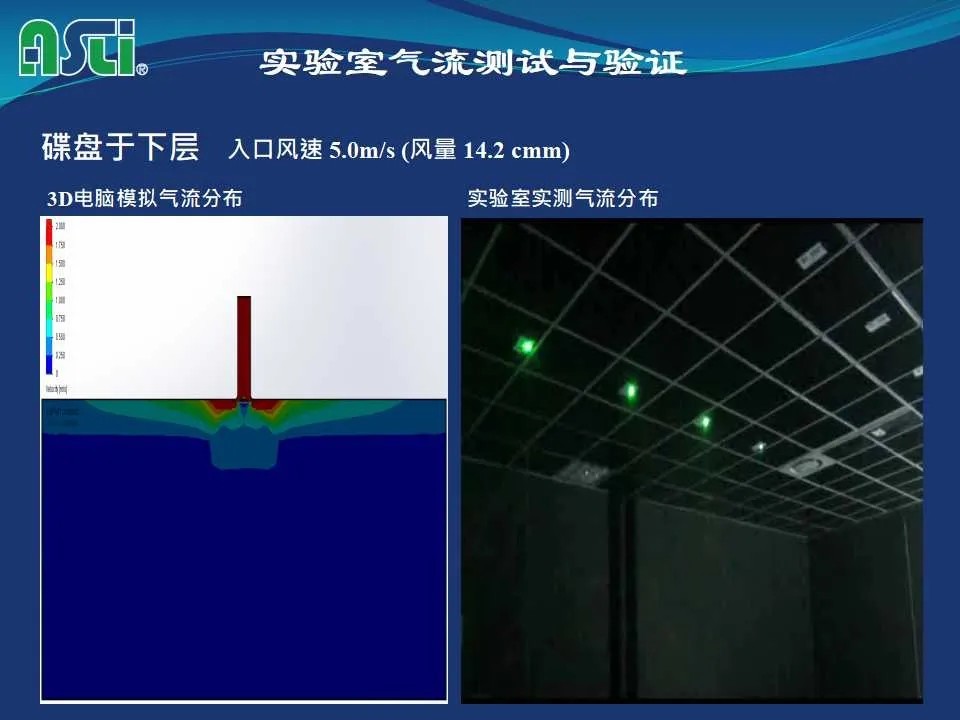

Mold design
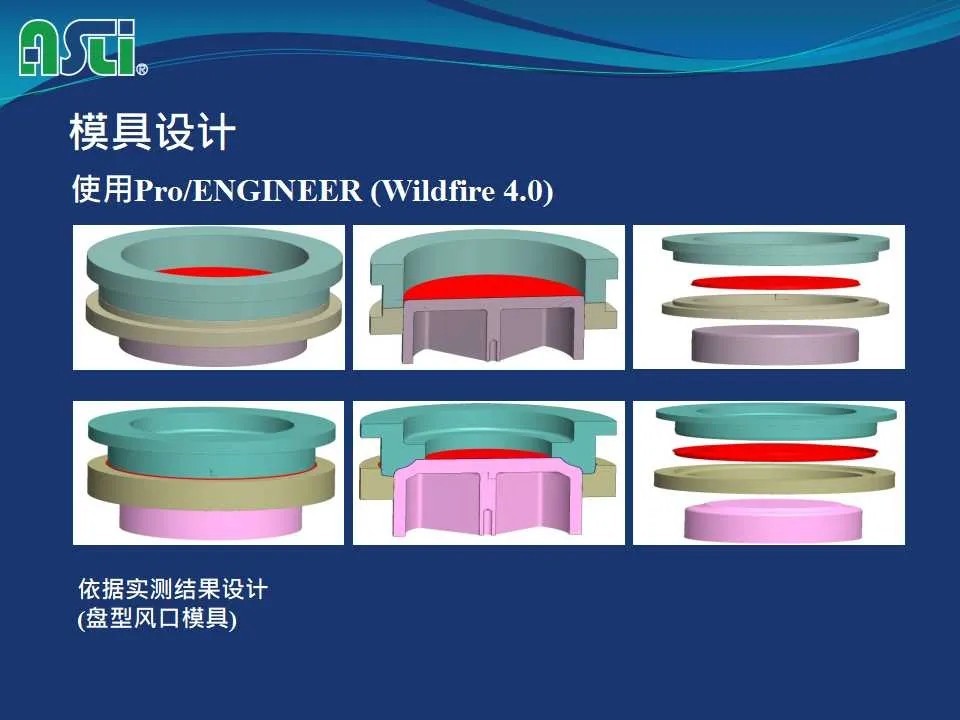
Product performance testing

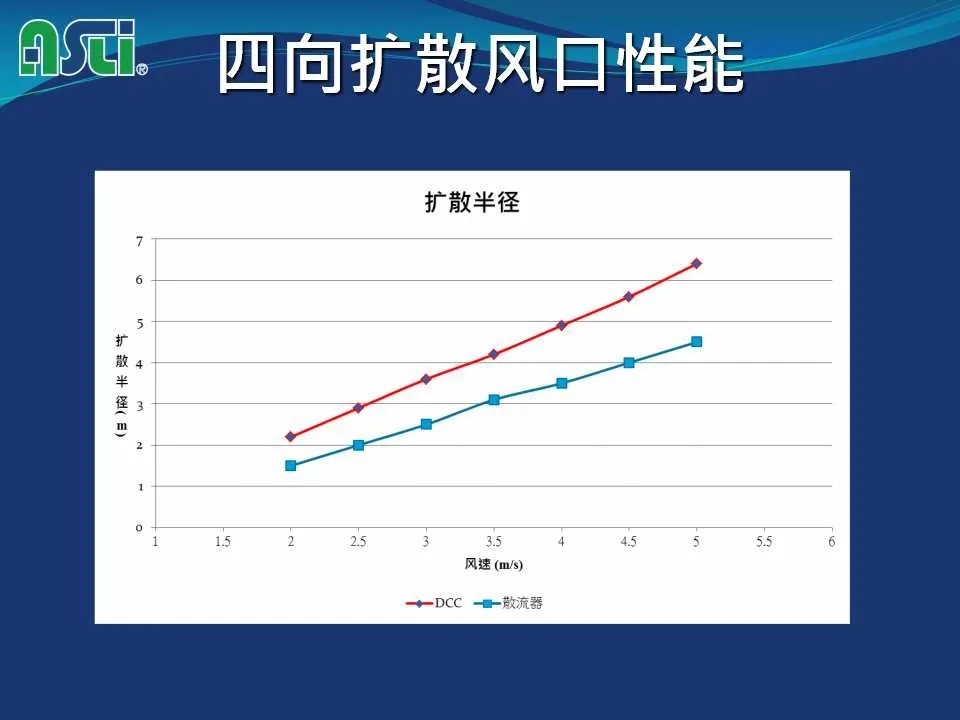


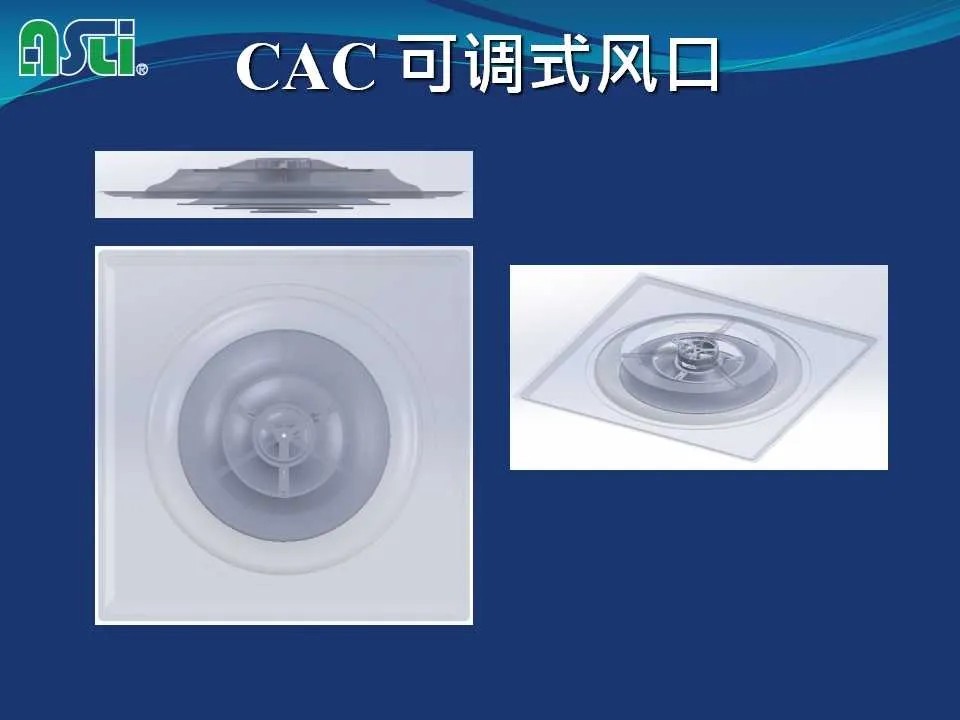
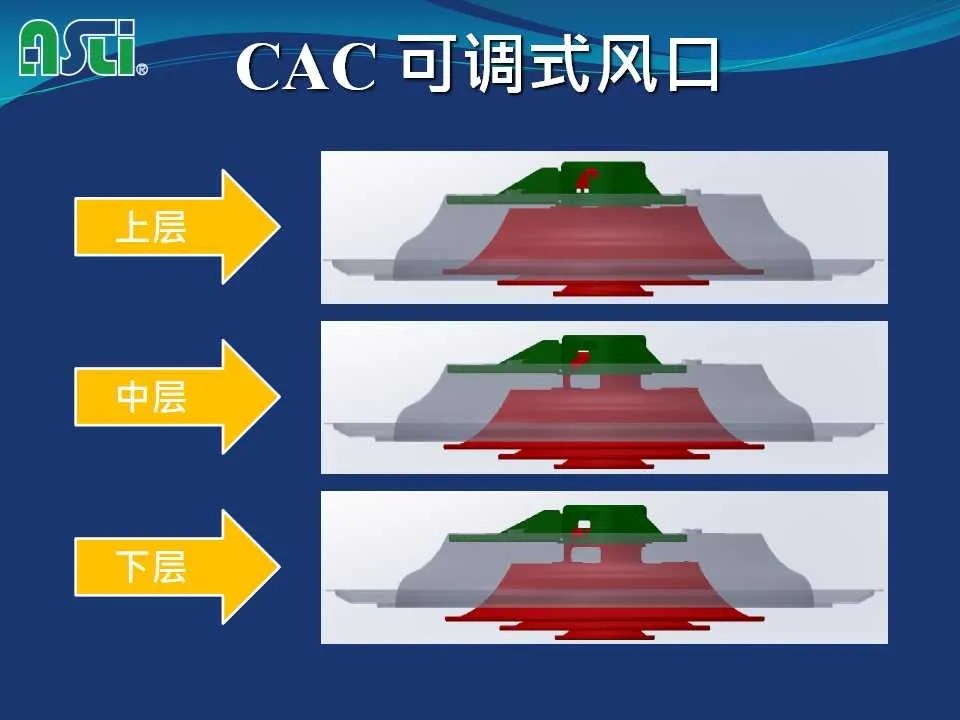


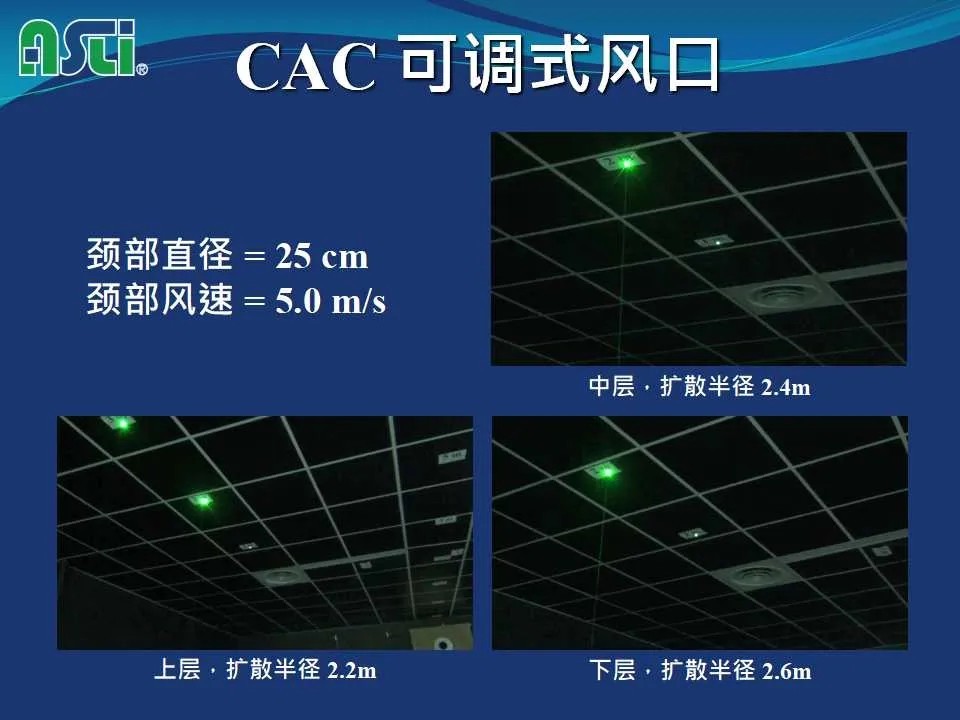

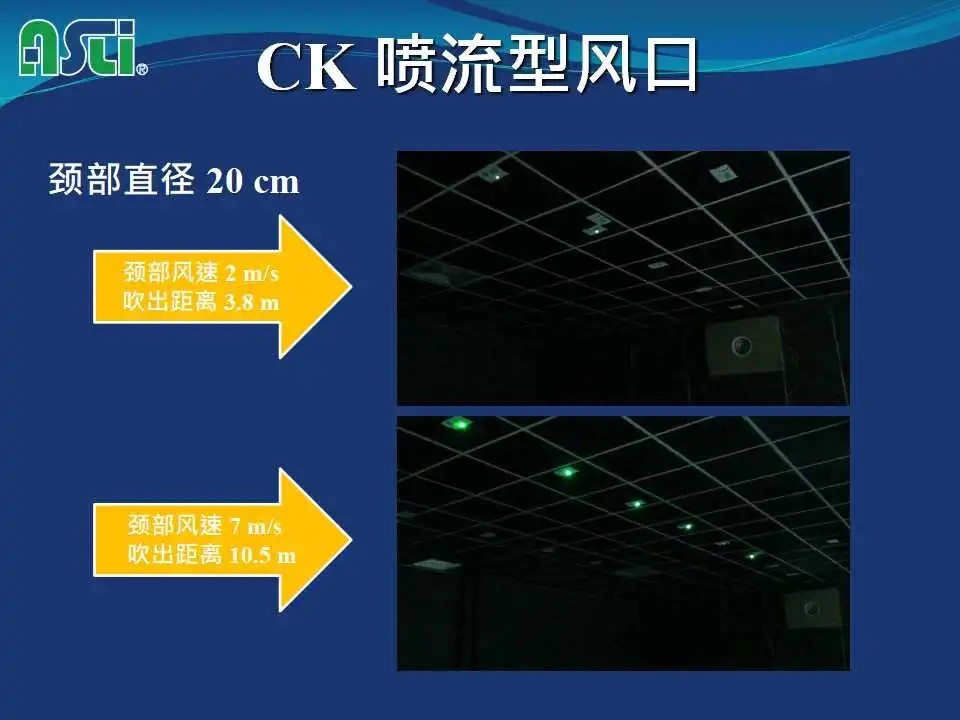
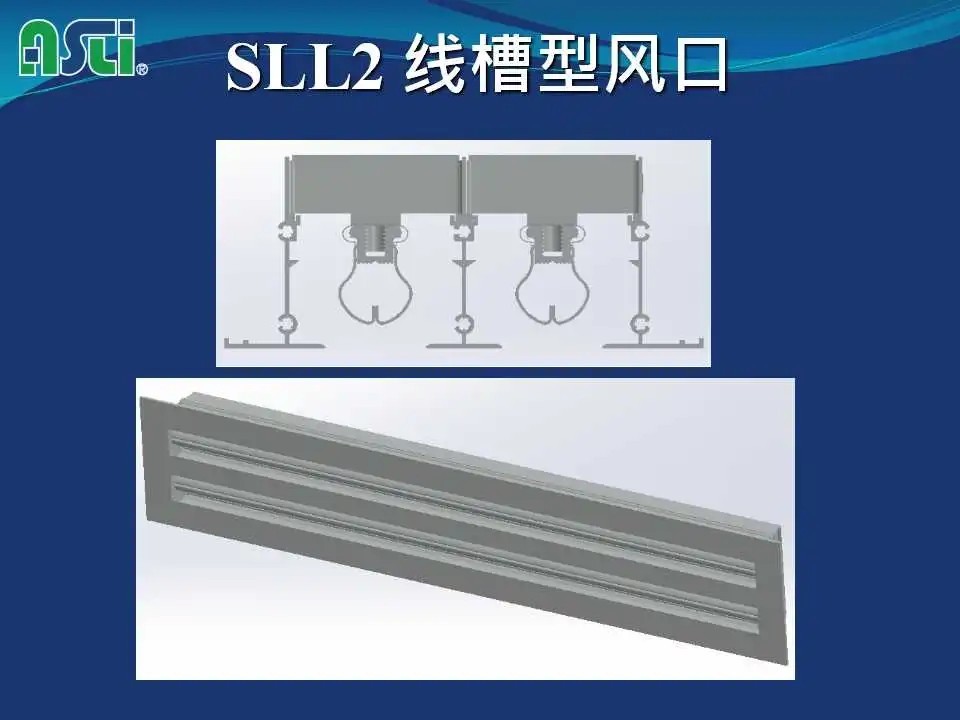
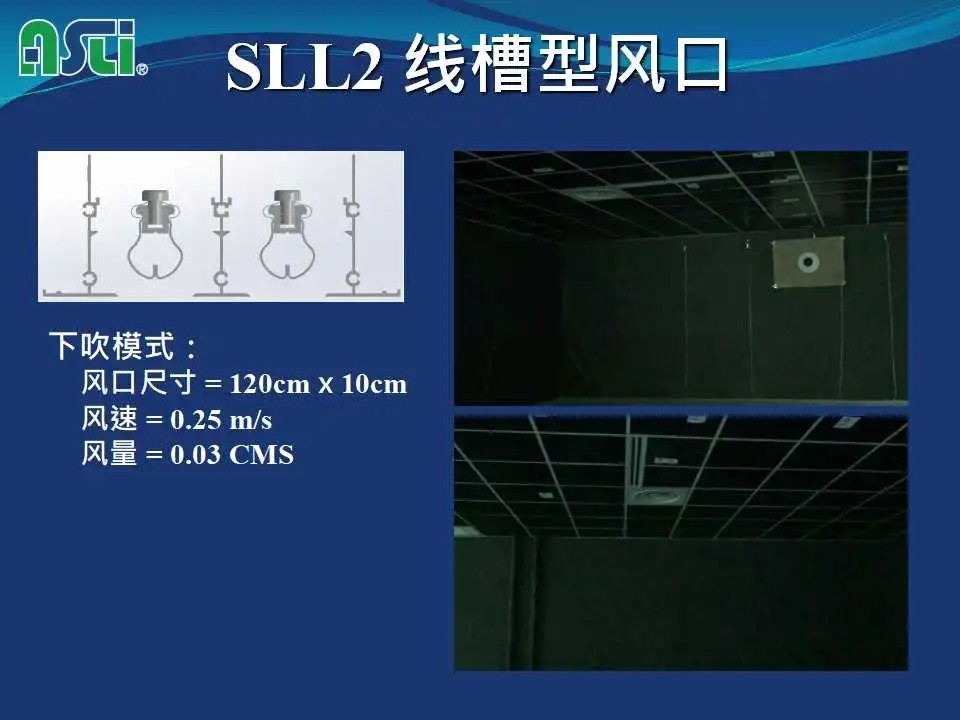
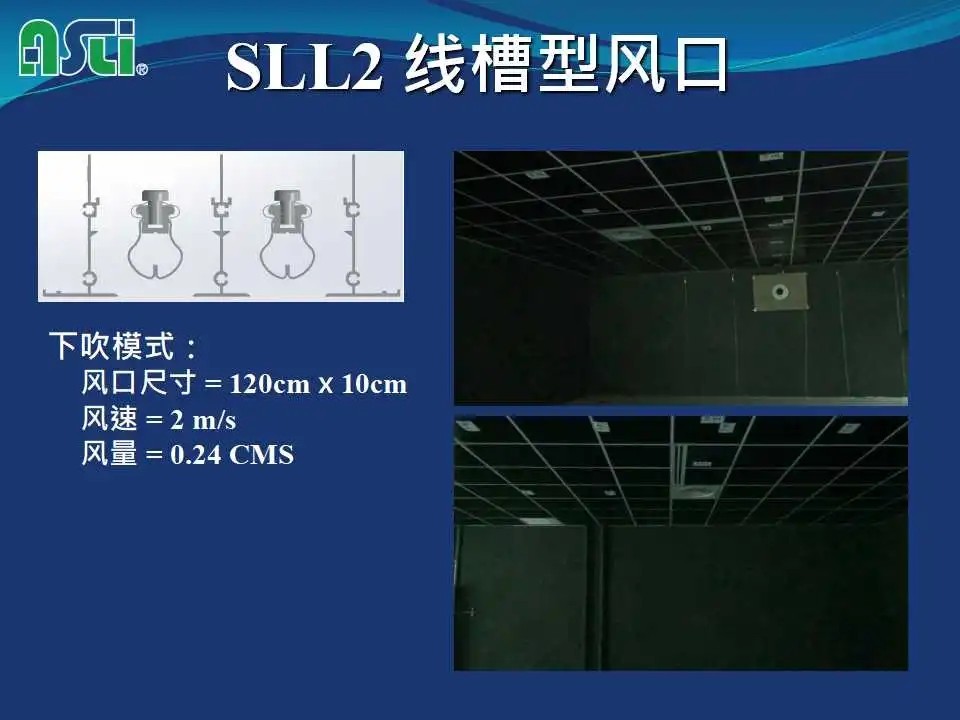
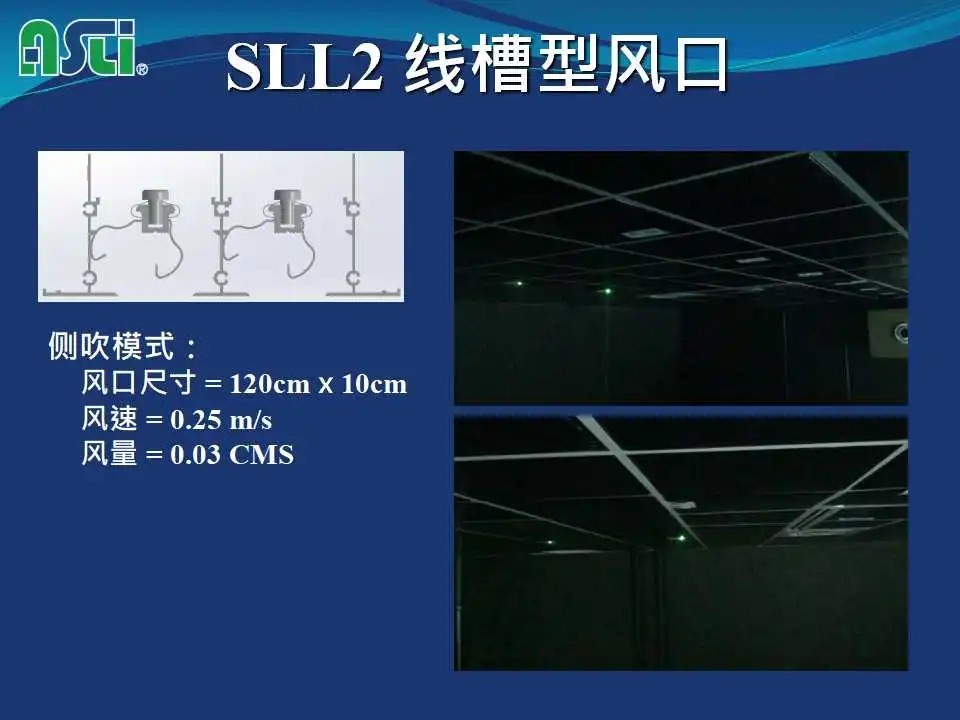
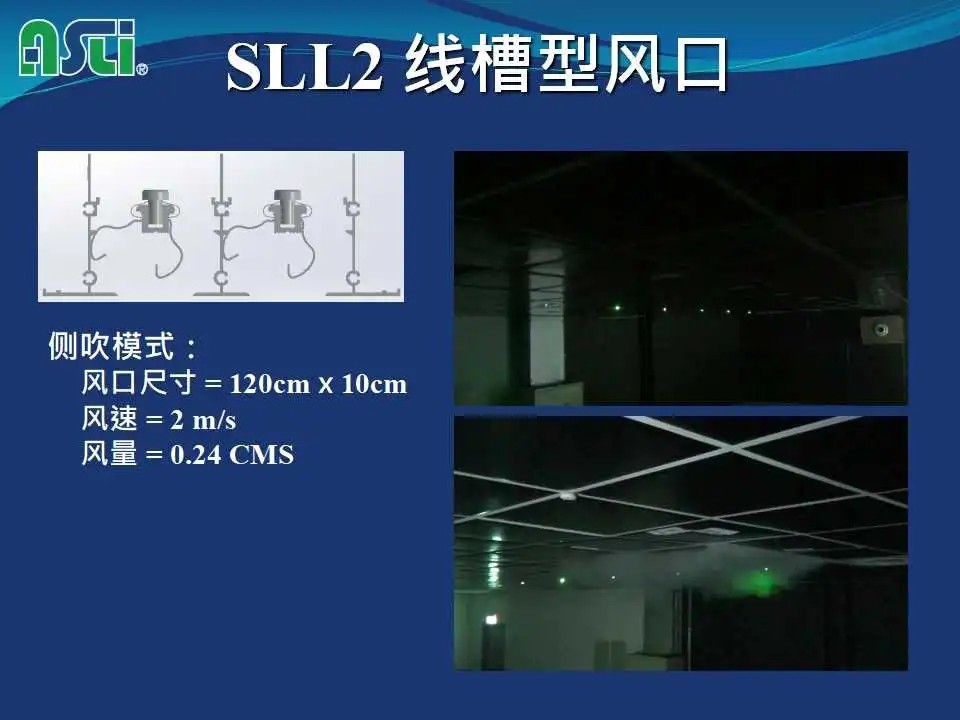
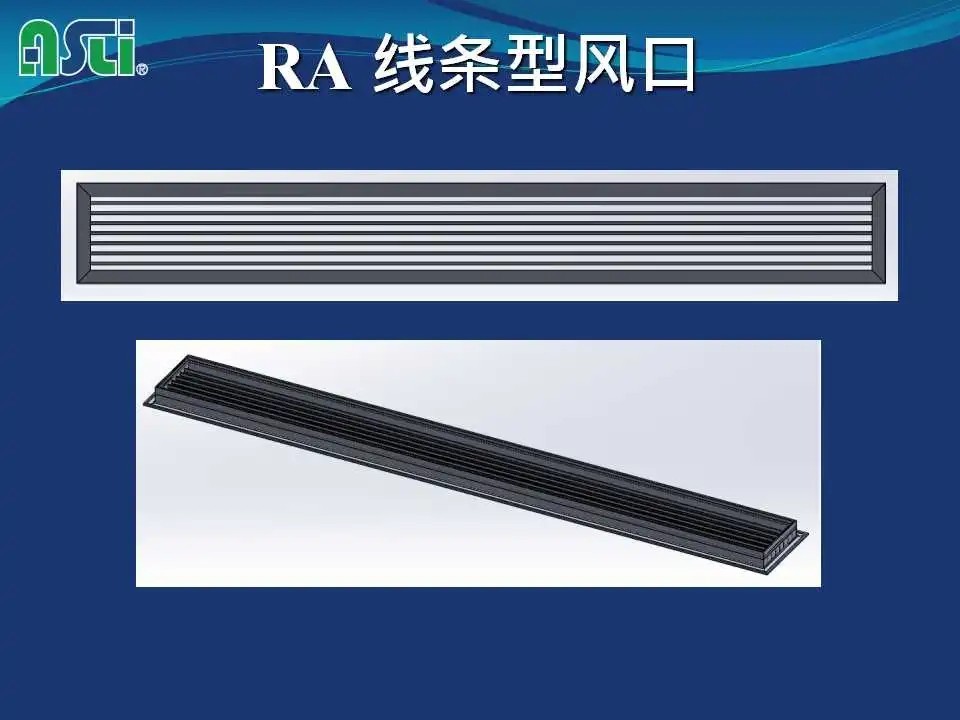

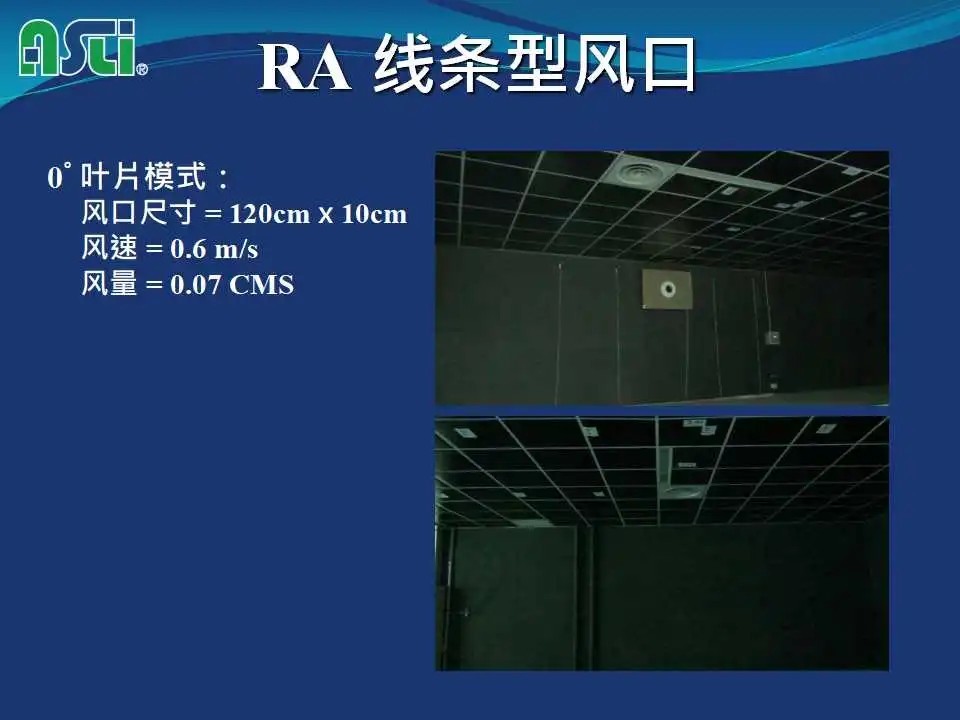
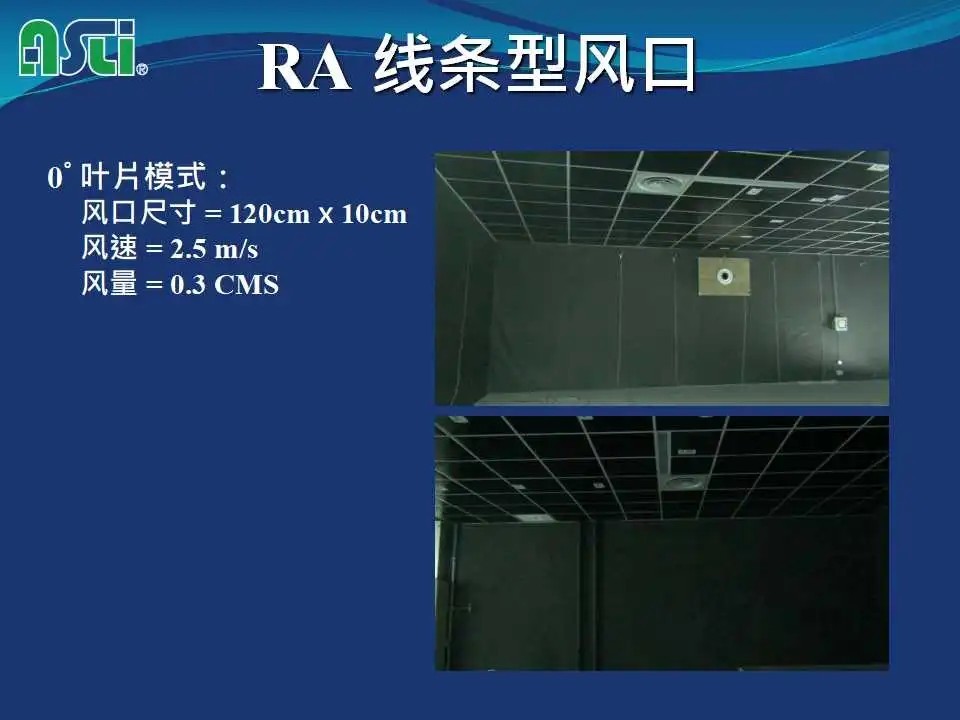

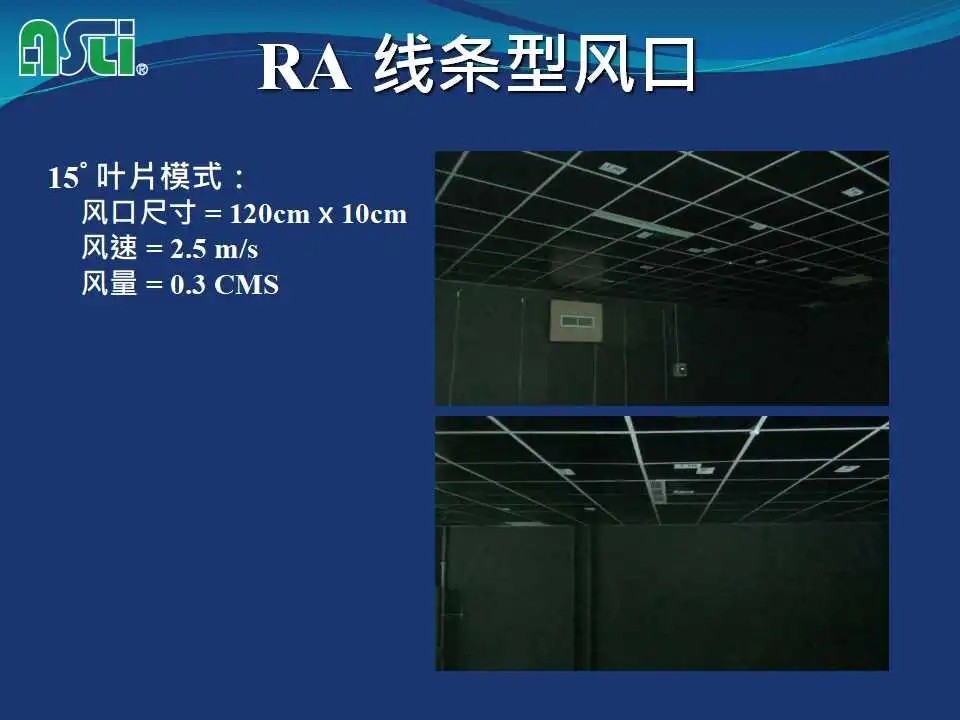
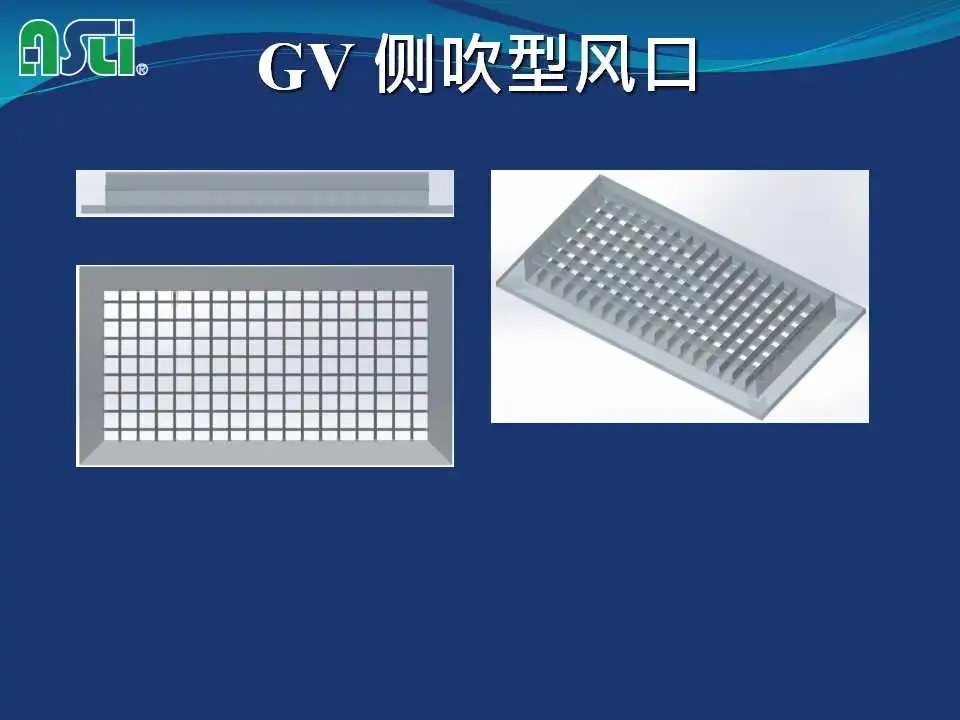

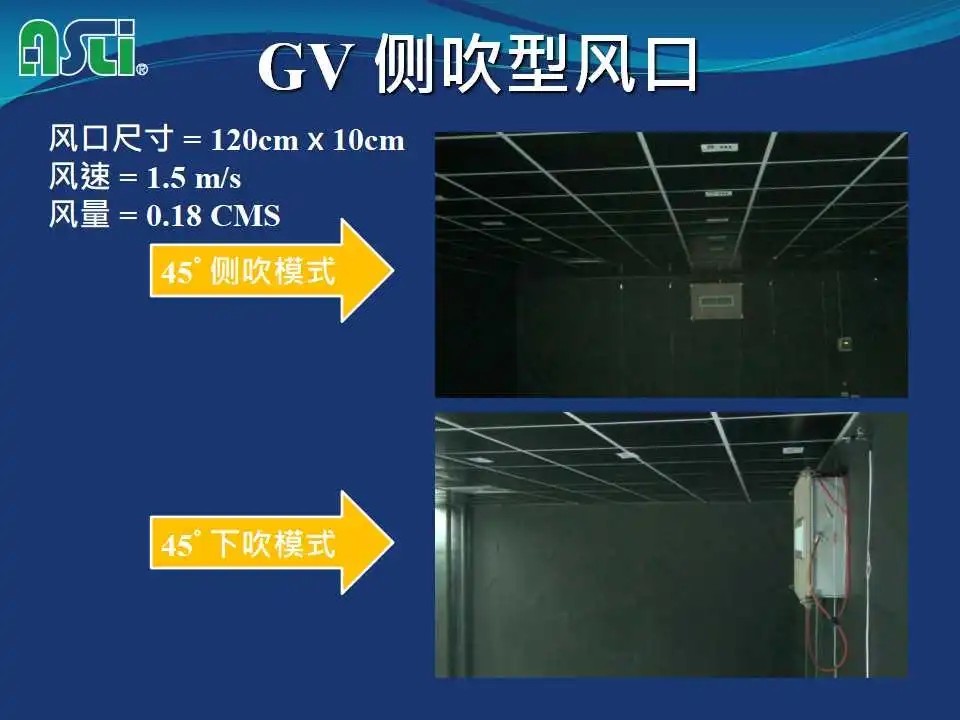
Air valve product performance test

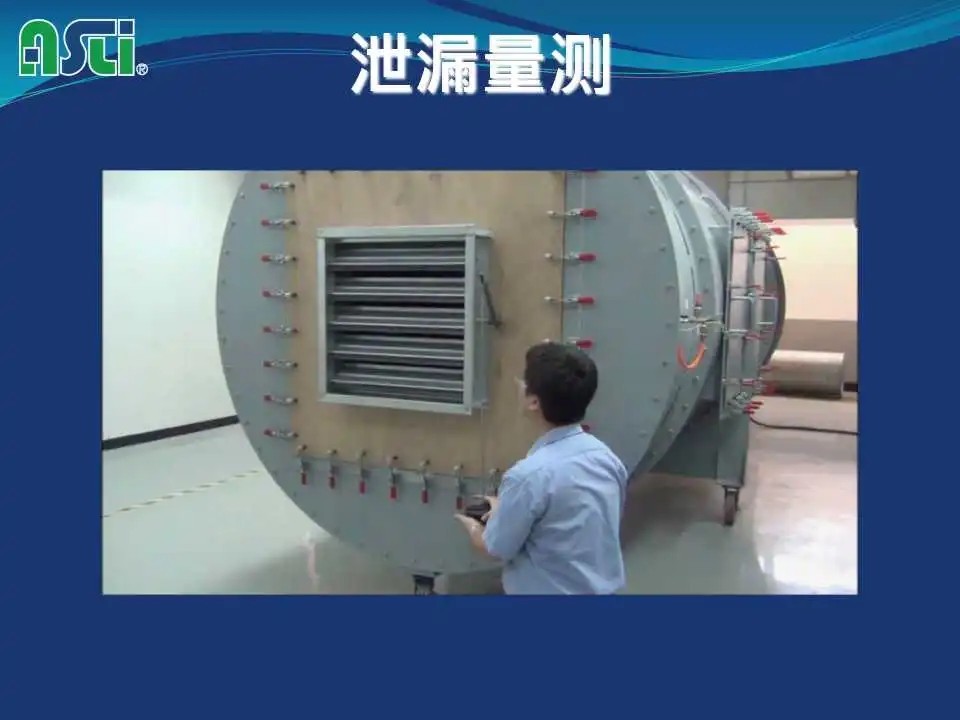

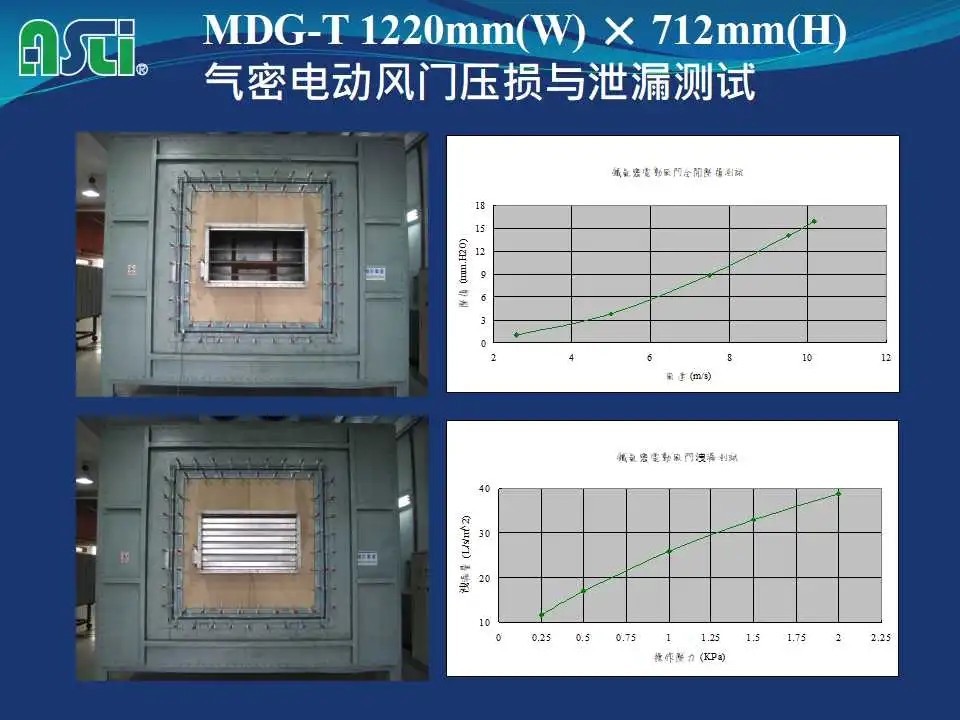
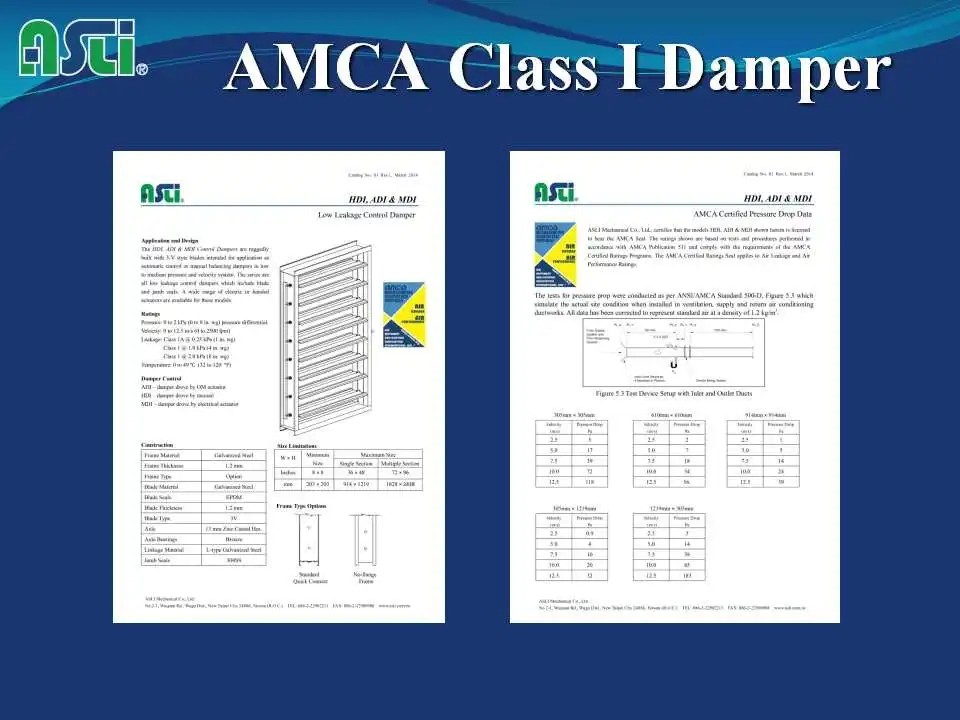
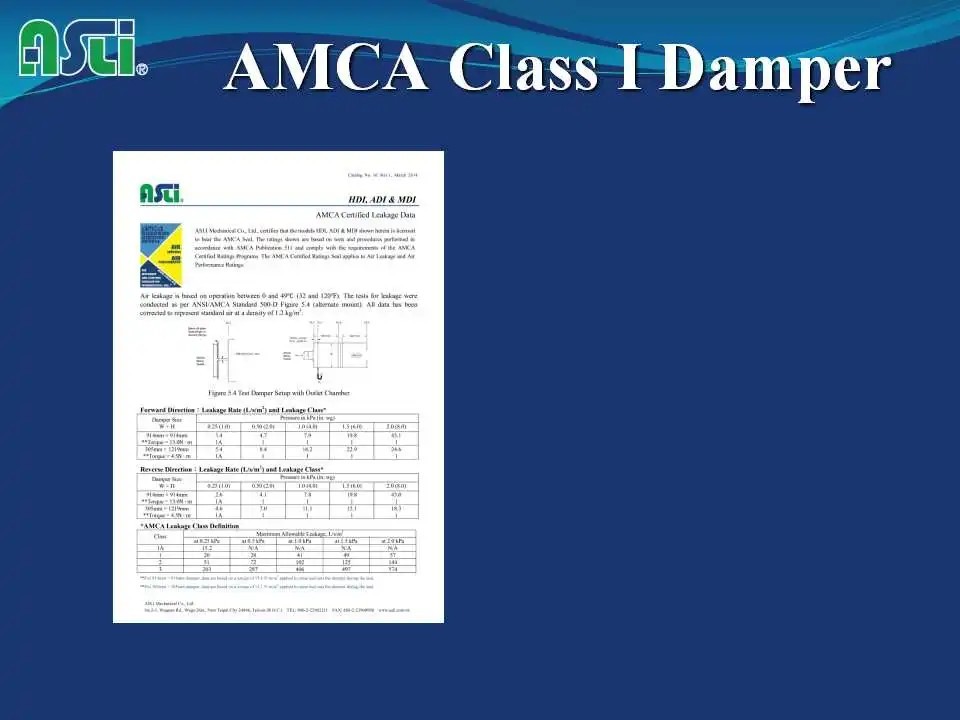

Noise reduction product performance test

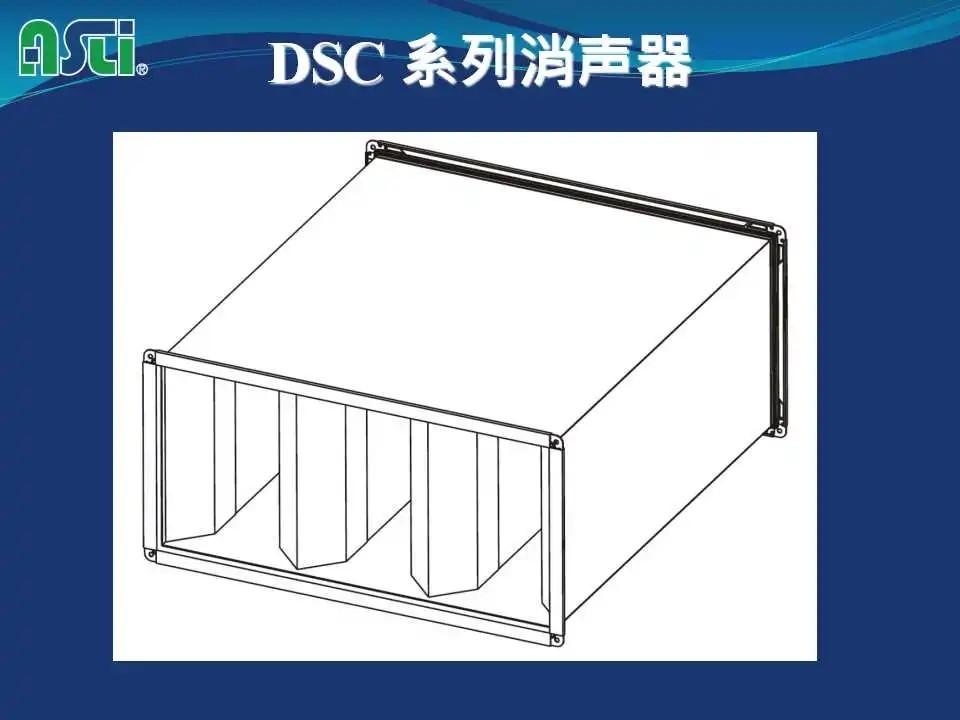

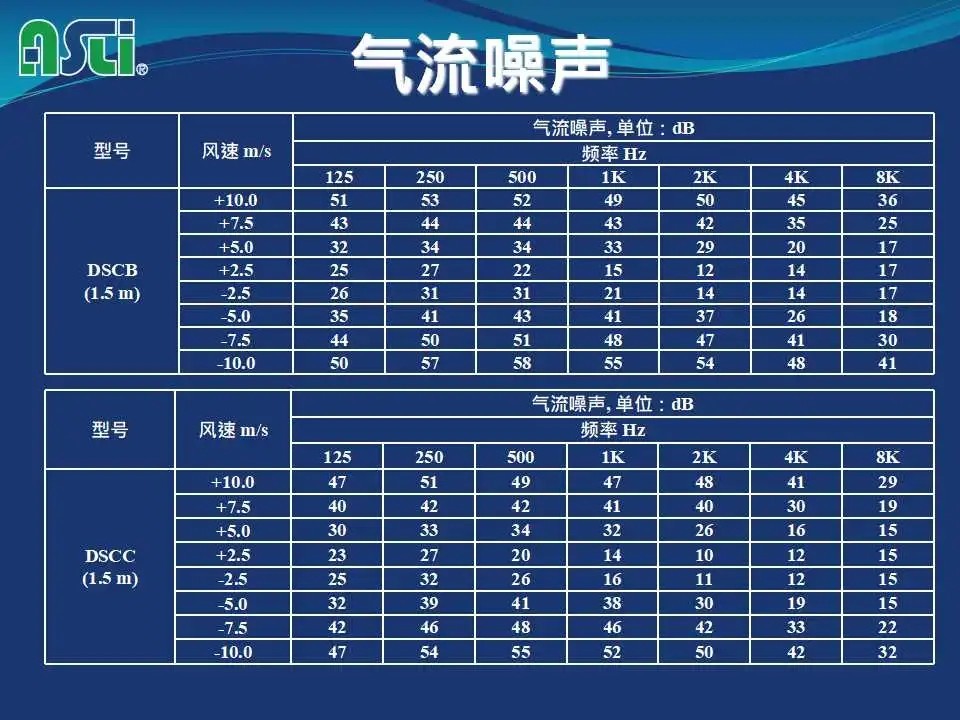
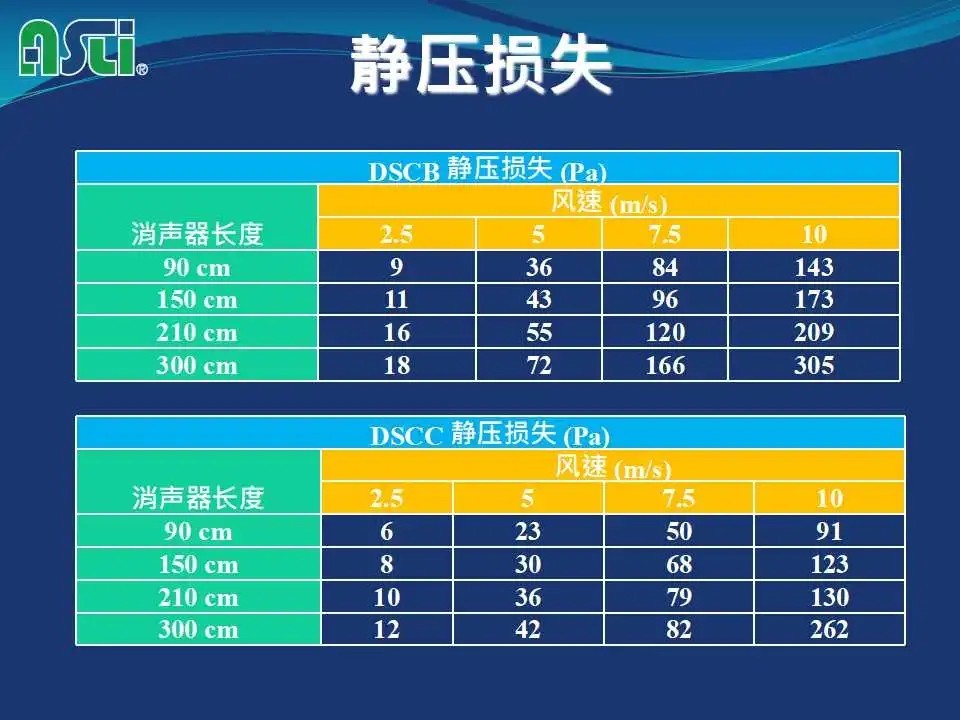
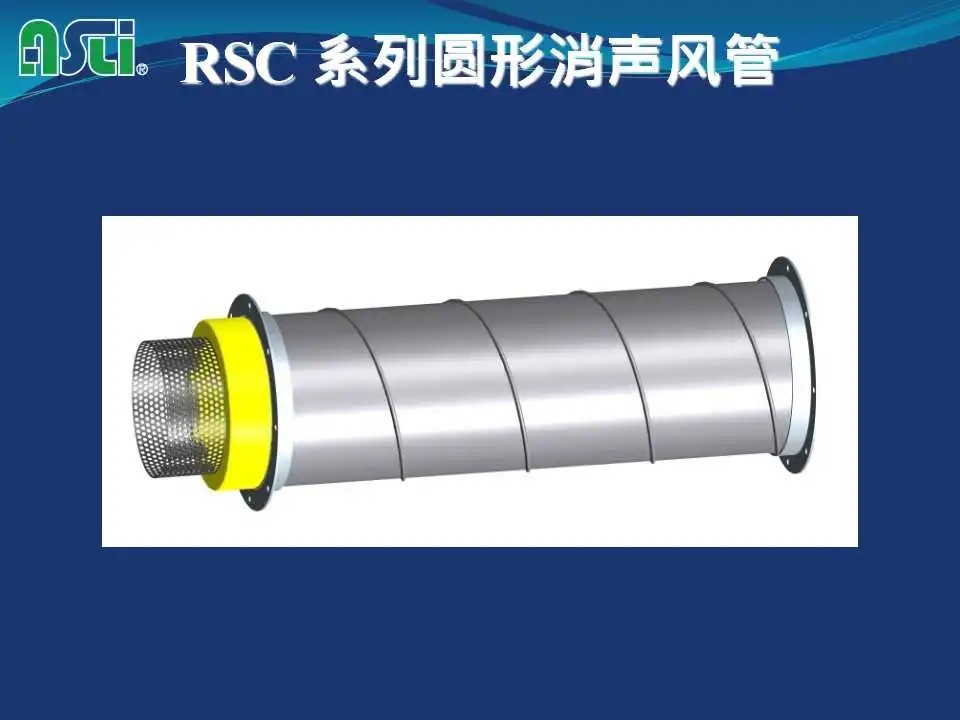

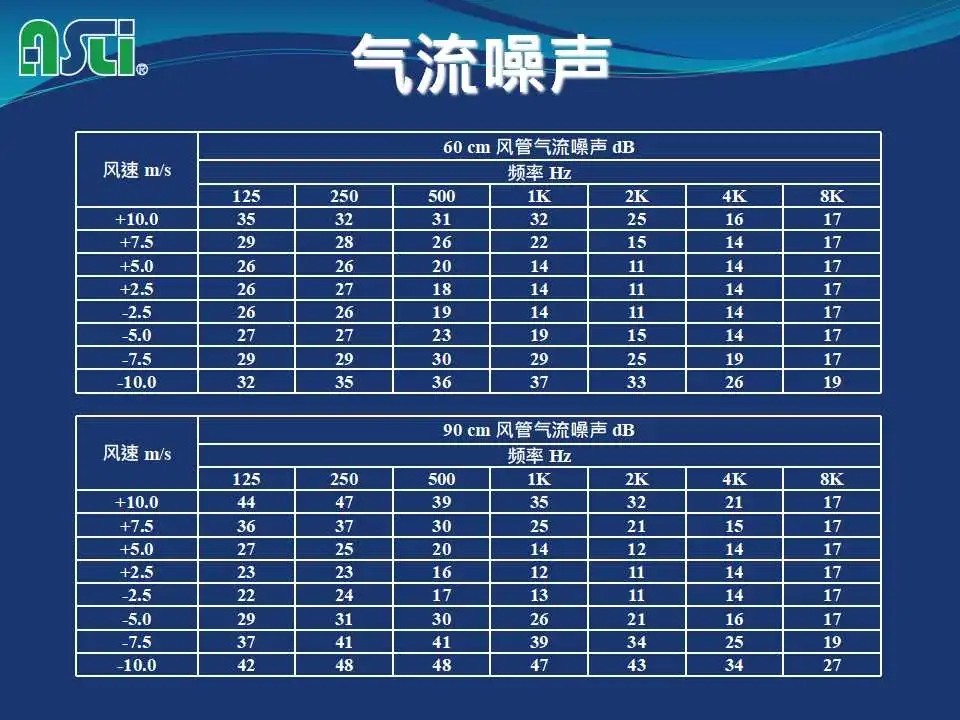
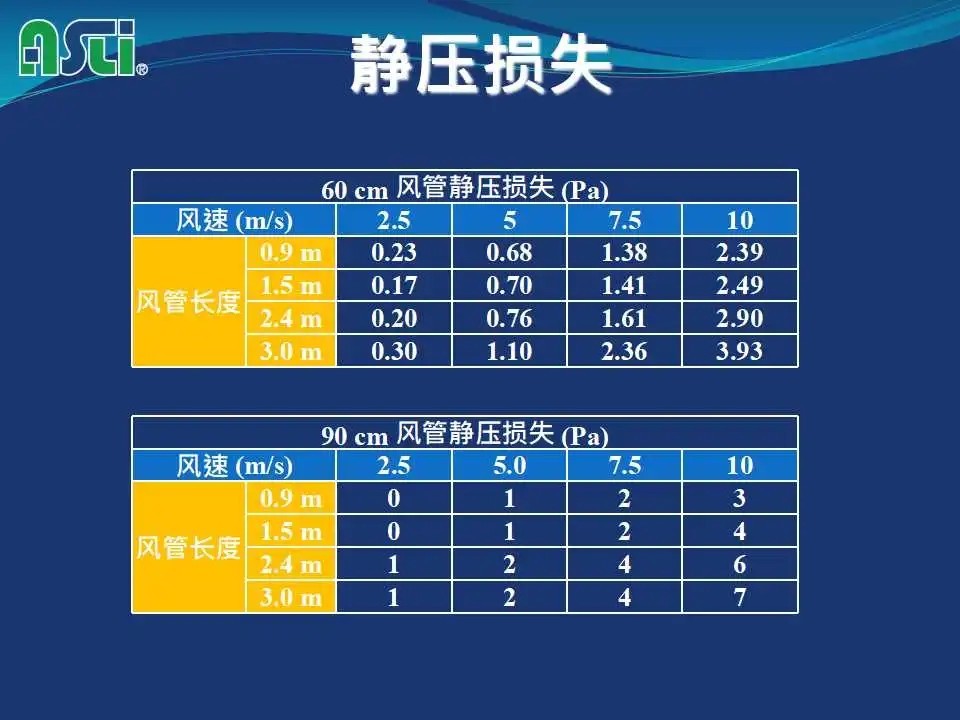
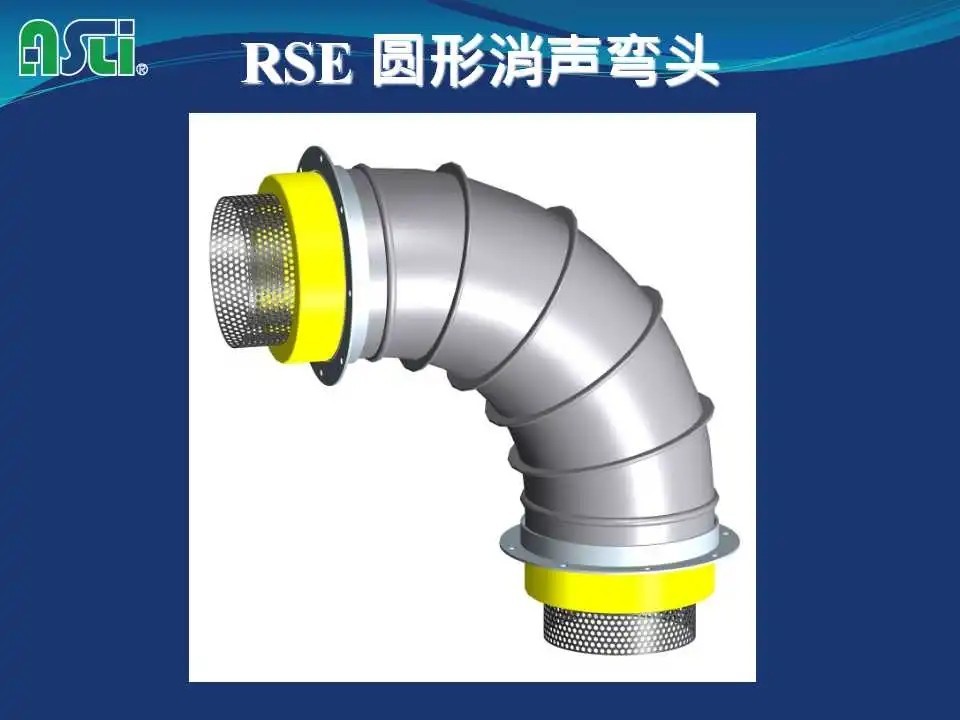

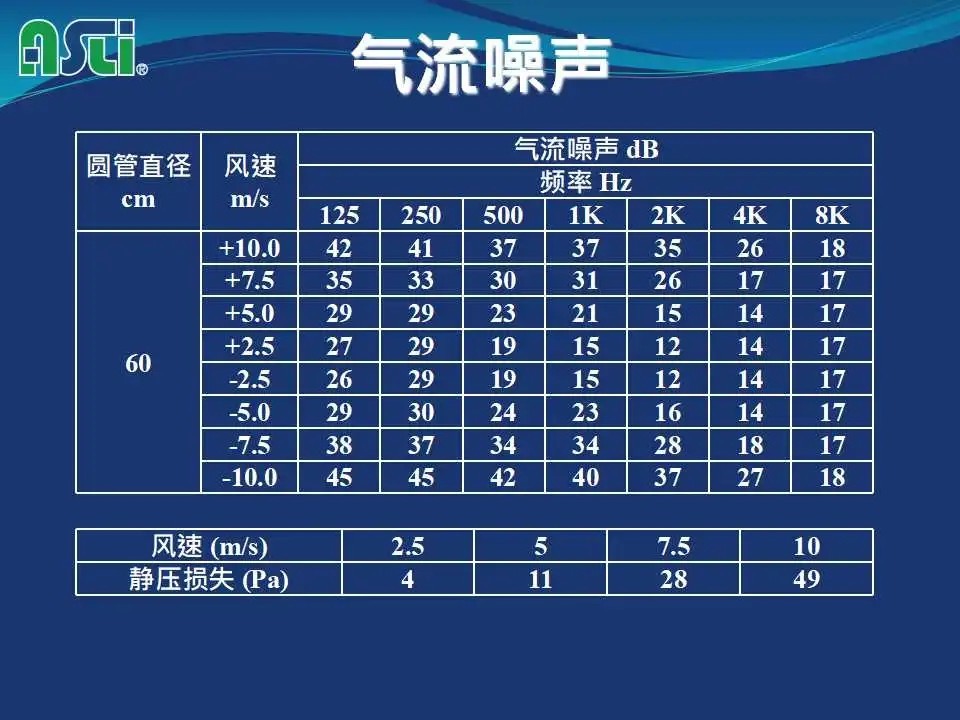
Headquarters Laboratory
Motivation for building a ventilation and noise laboratory
1. Verify the airflow distribution of the vents and provide correct performance data
2. Test the level of valve leakage to improve product competitiveness with world-class manufacturers
3. Overcome the difficulties in obtaining UL certification and increase the speed of fire damper performance verification
4. Provide noise product performance to improve the noise quality environment
5. Improve the product quality and corporate image of the group company








Laboratory Introduction
● The laboratory is located in Taoyuan, Taiwan, with a usable area of 2,600 square meters.
● In line with the market requirements of Taiwan and Southeast Asia, the measuring equipment
is designed and constructed in accordance with the test standards of ISO, AMCA, UL, ASTM and ASHRAE.
● Product performance verification test procedures and equipment and instruments all comply with relevant international test standards.
● Laboratory certification
A. Taiwan TAF Certification Foundation Certified Laboratory (SO 17025), certification number 2385. (TAF is equivalent to China CNAS)
B. US UL Certified Laboratory (UL 555/555S)

General air valve performance test
● Method basis: AMCA 500-D
● Equipment capabilities:
1. Circular air chamber
test port size - 1.14m Φ 1.14m
Maximum test pressure - 300mmAq
Maximum test air volume - 350CMM
2. Rectangular air chamber
test port size - 2.0m Φ 2.0m
Maximum test pressure - 340mmAq
Maximum test air volume - 2800CMM
● Measurement items: pressure loss, leakage and pressure resistance












Future work - Introducing national standard testing methods to meet the needs of the Chinese market
JG/T 436 Building ventilation air volume regulating valve
Fire valve performance test
Fire damper classification
● Smoke damper
● Fire damper
● Fire/smoke damper
Test Methods
● UL 555 -Fire Damper
● UL555S-Smoke Damper
● AMCA 500-D









Future work - Introducing national standard testing methods to meet the needs of the Chinese market
GB 15930 Fire dampers for building ventilation and smoke exhaust systems
Various air outlet performance tests
● Method - ANSI-ASHRAE 70 Method of Testing the Performance of Air Outlets and Air Inlets
● Measurement items - Blowing distance (or diffusion radius), pressure loss


Future work - Introducing national standard testing methods to meet the needs of the Chinese market
1. JG/T 14 Ventilation and air conditioning vents
2. JG/T 20 Air distributor performance test method
Muffler and muffler elbow performance test
量测方法
ASTM-E477 Standard Test Method for Measuring Acoustical and Airflow Performance ofDuct Liner Materials and Prefabricated Silencers
Measurement Items
√ Pressure Drop
√ Insertion Loss
√ Airflow Generated Noise
Measuring range
√ Frequency range -50Hz~8000Hz
√ Maximum wind speed -20m/s








Future work - Introducing national standard testing methods to meet the needs of the Chinese market
GB/T 25516 Acoustics - Laboratory measurement methods for duct silencers and duct end units - Insertion loss, airflow noise and total pressure loss






Product development and design
Product design 3D drawing




Product 3D computer airflow simulation







Laboratory Airflow Testing and Validation








Mold design

Product performance testing

























Air valve product performance test







Noise reduction product performance test












 dengbaogang2006@163.com
dengbaogang2006@163.com +86 13901335544
+86 13901335544


